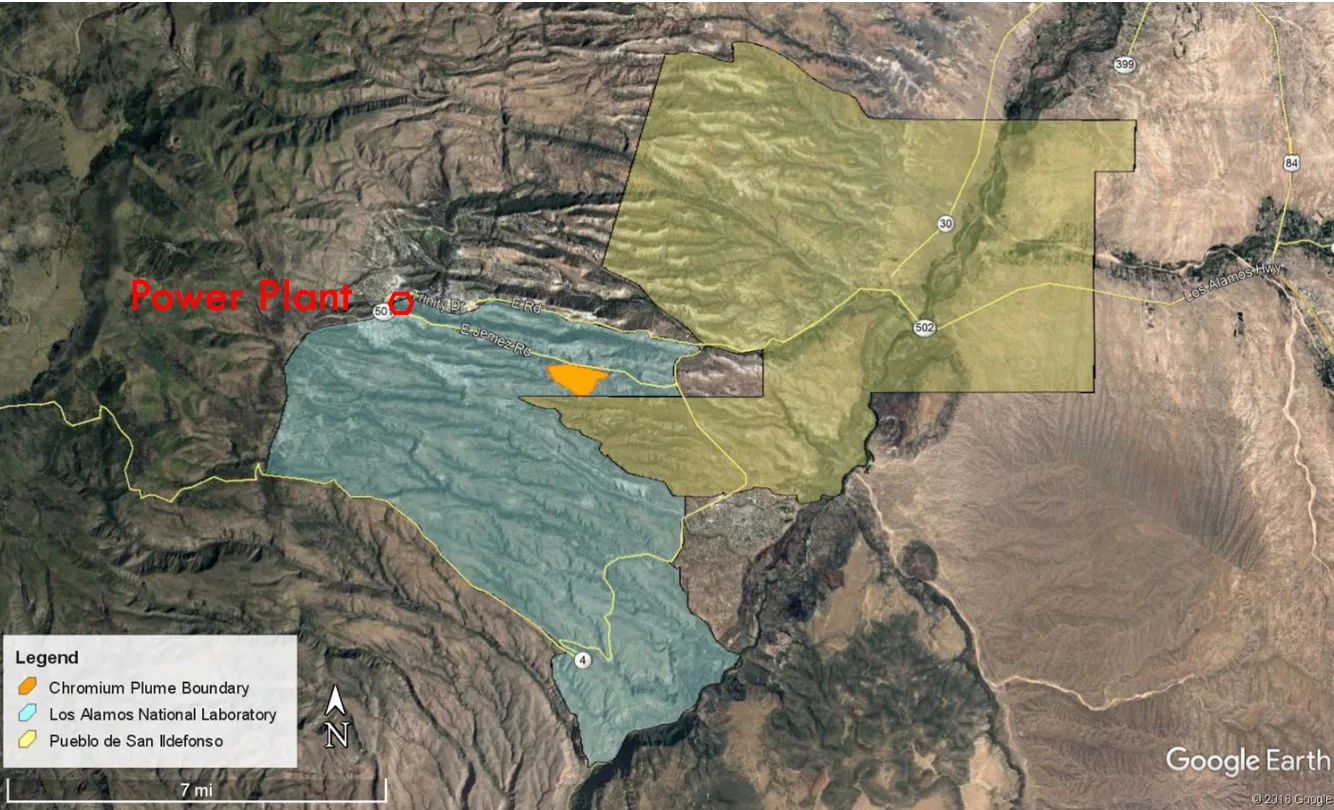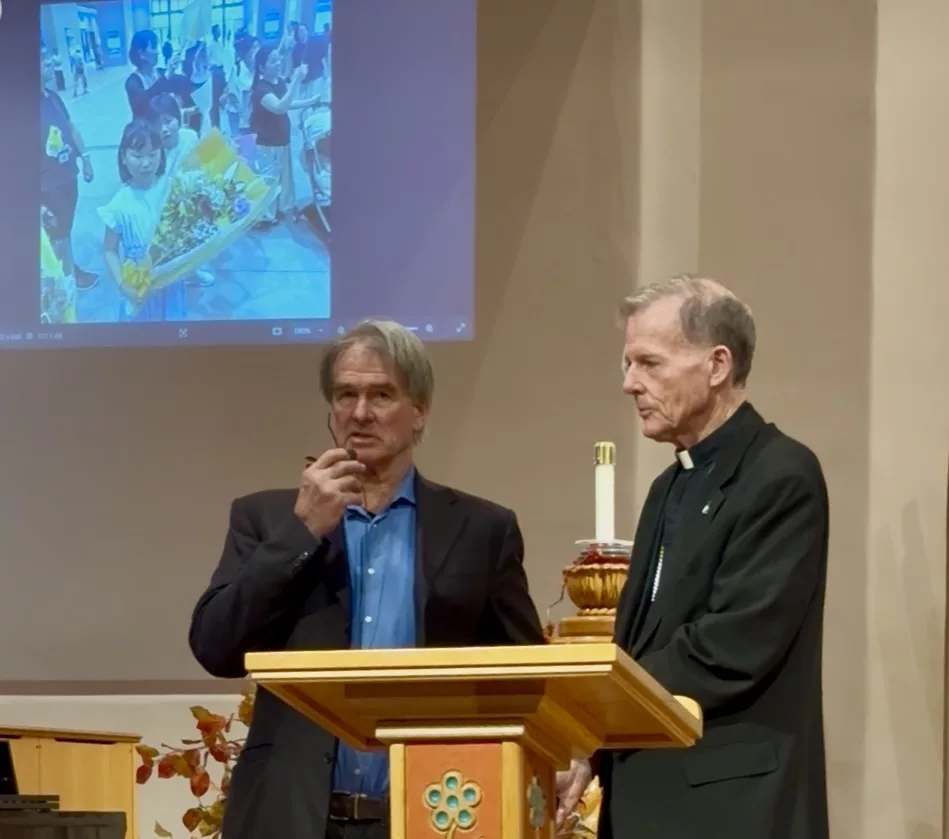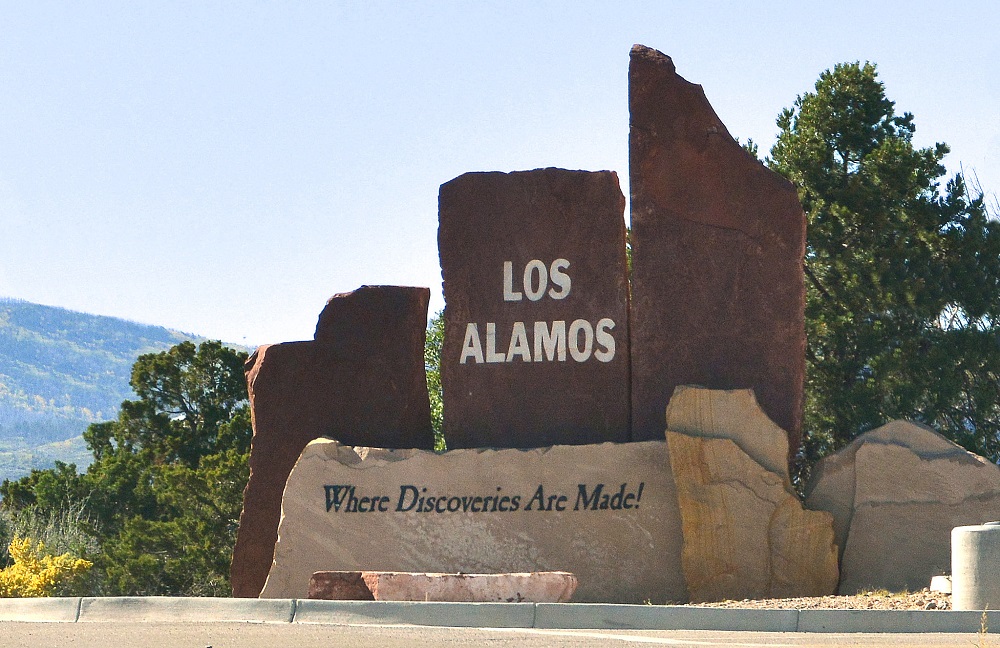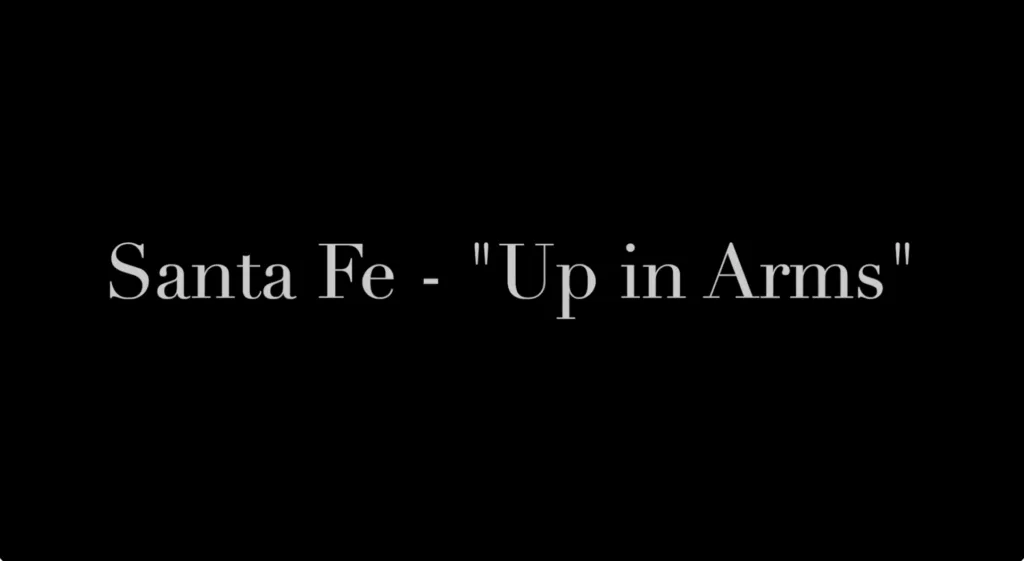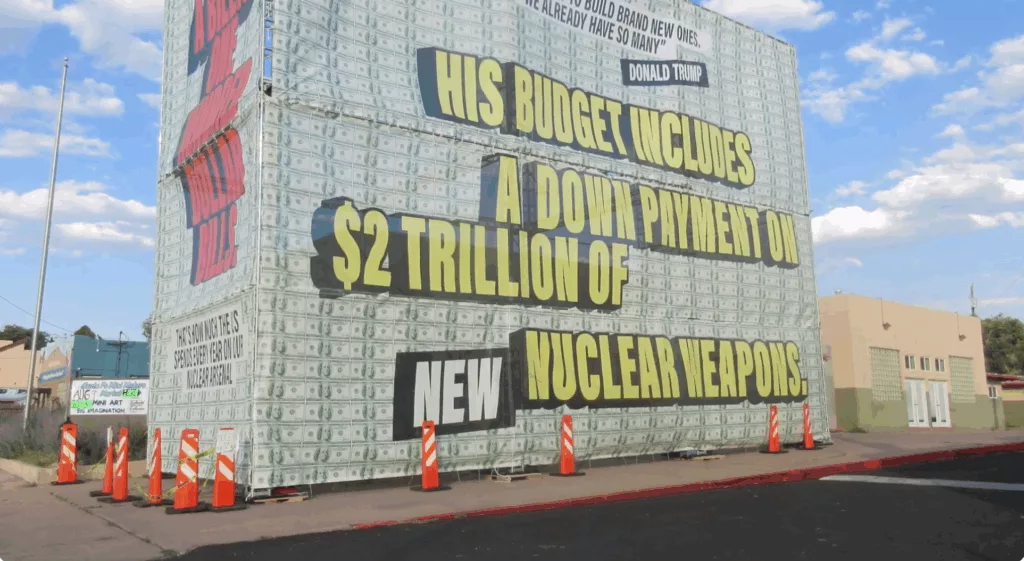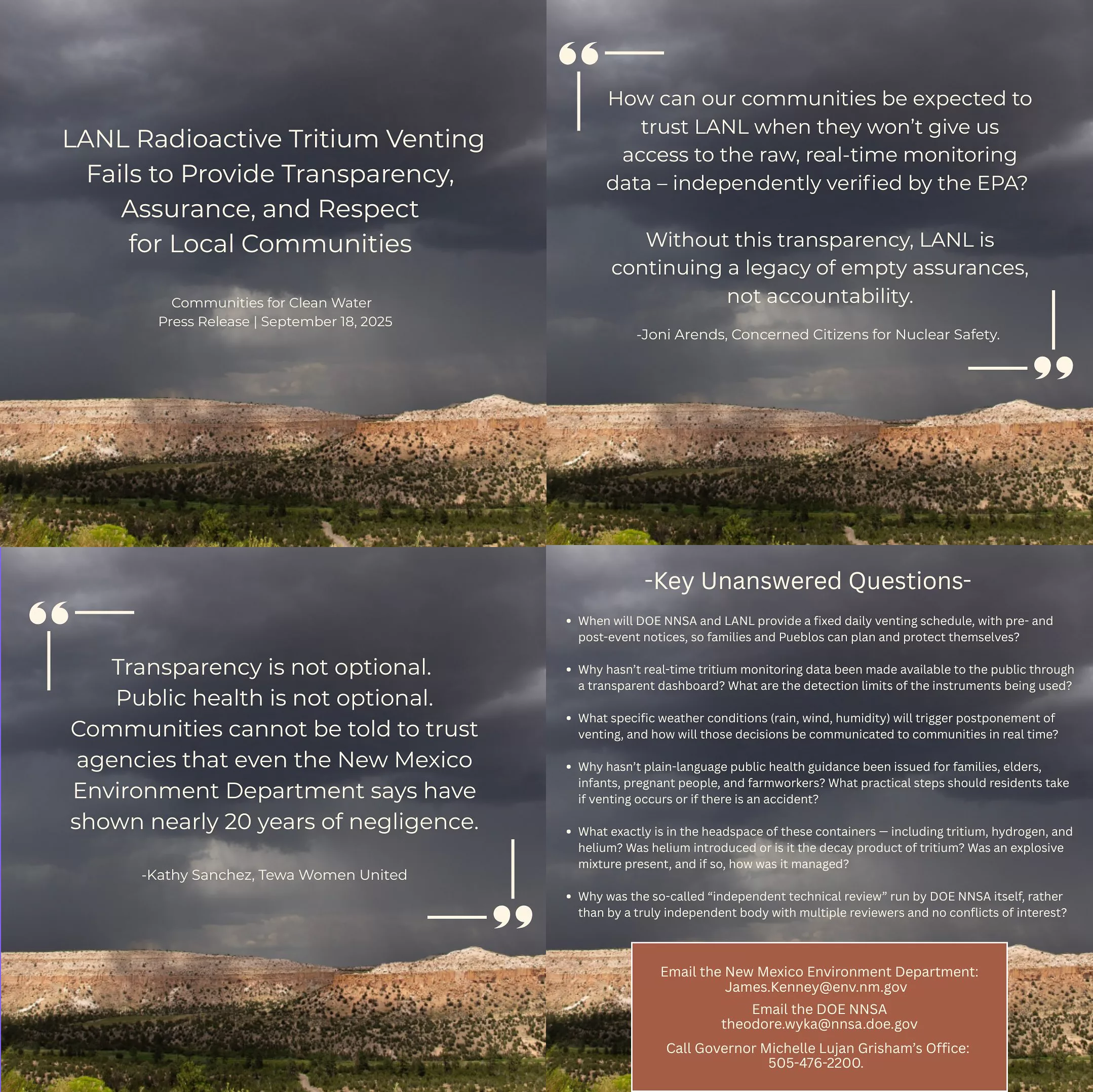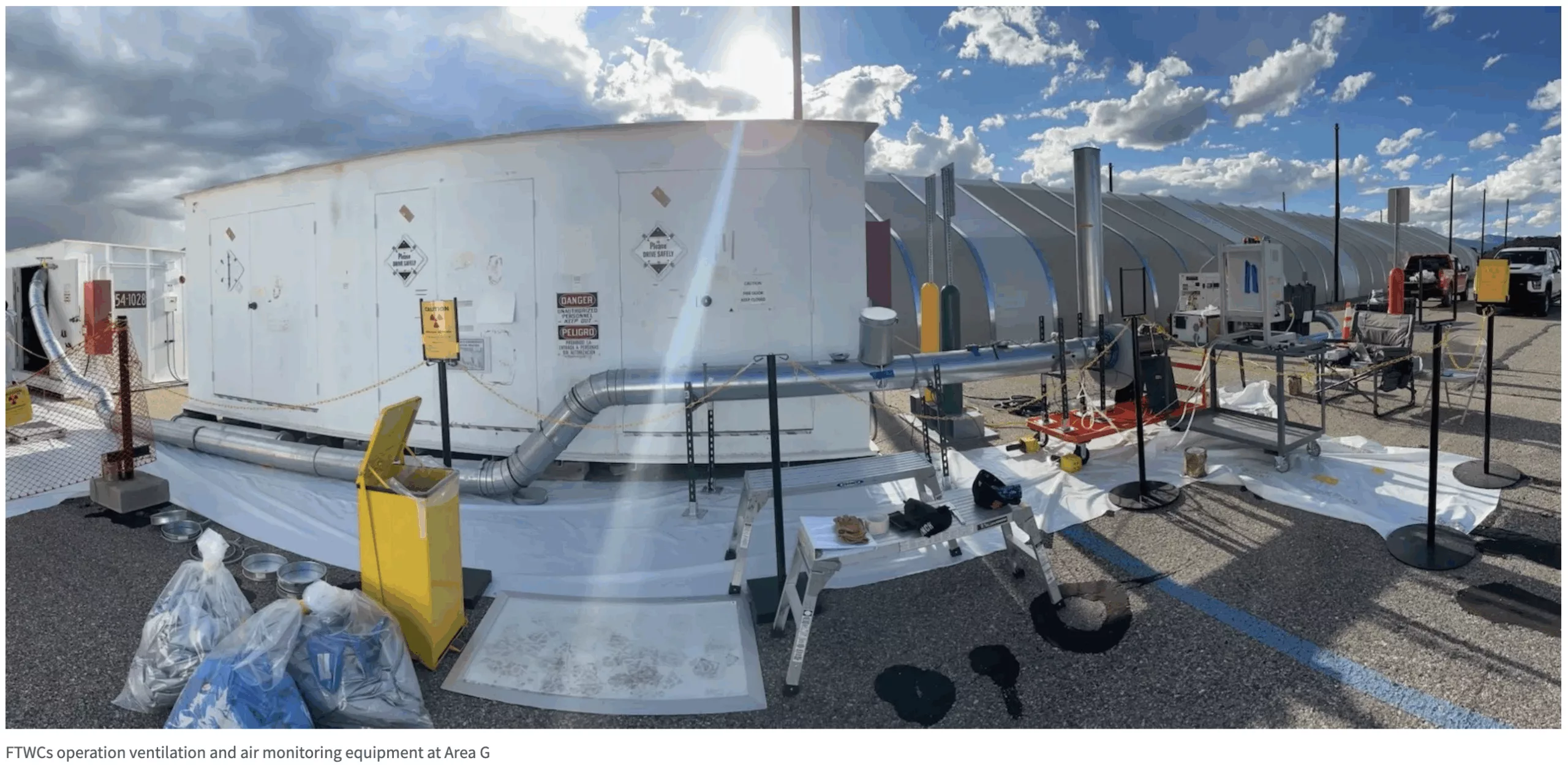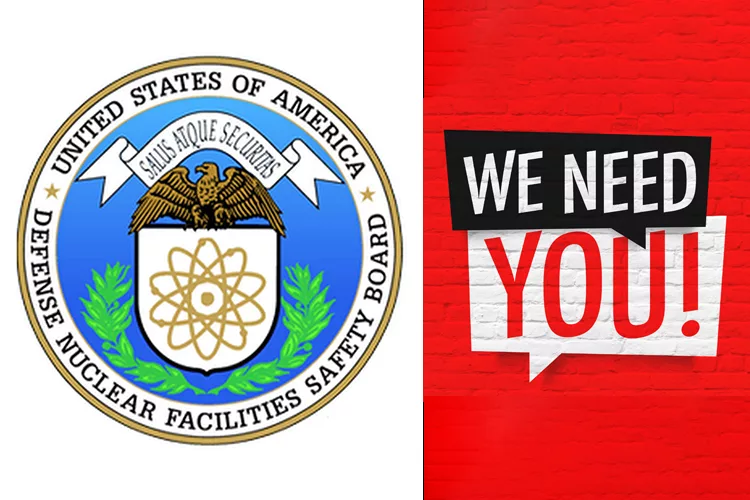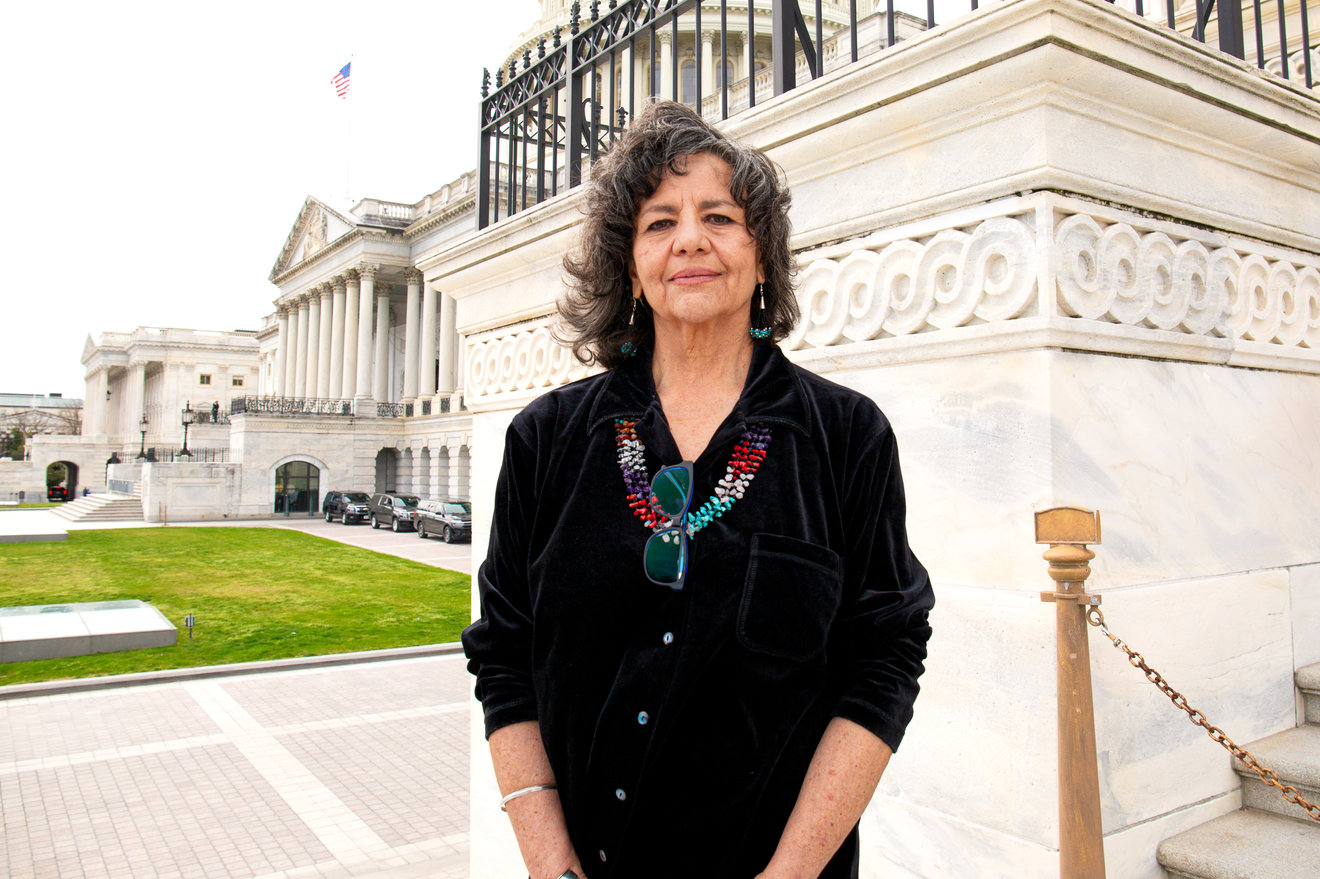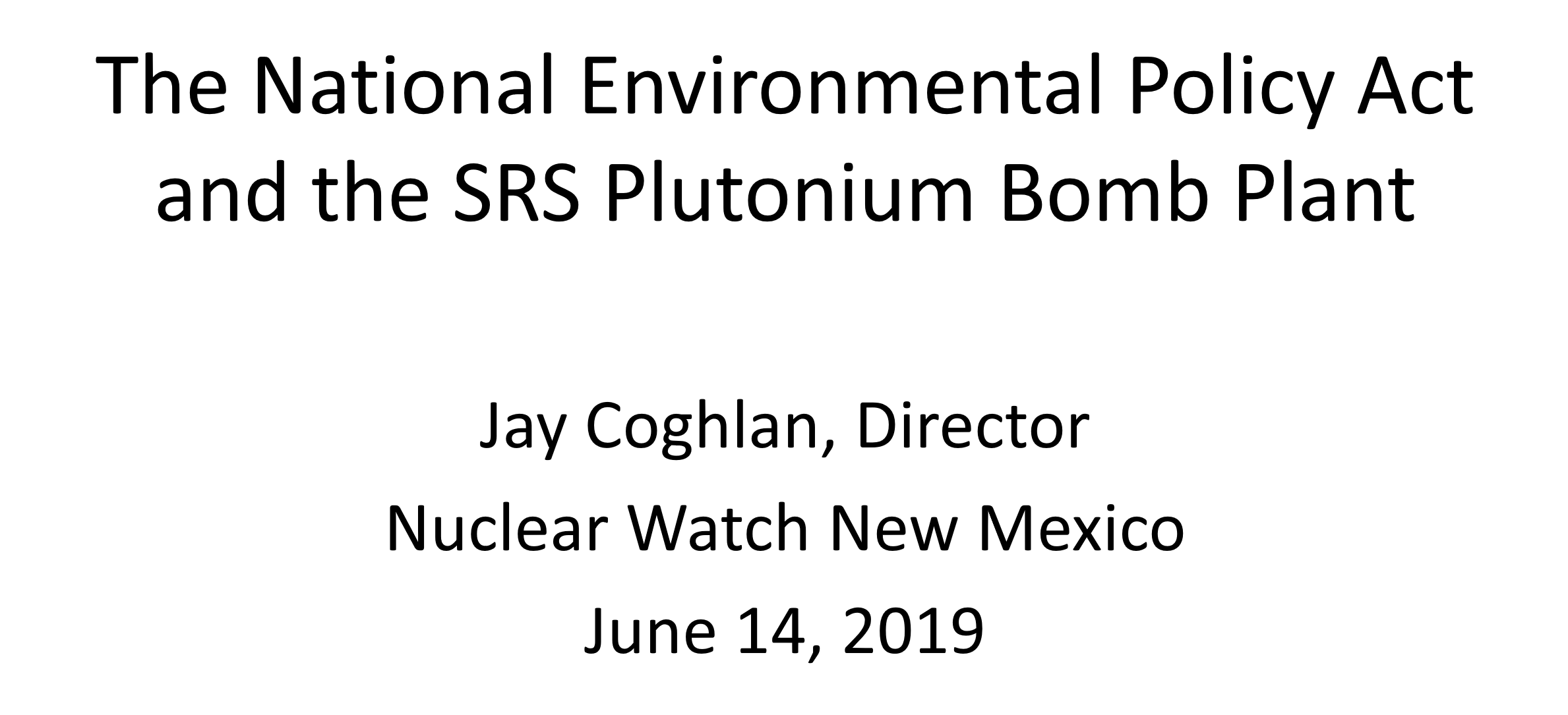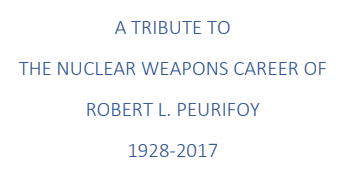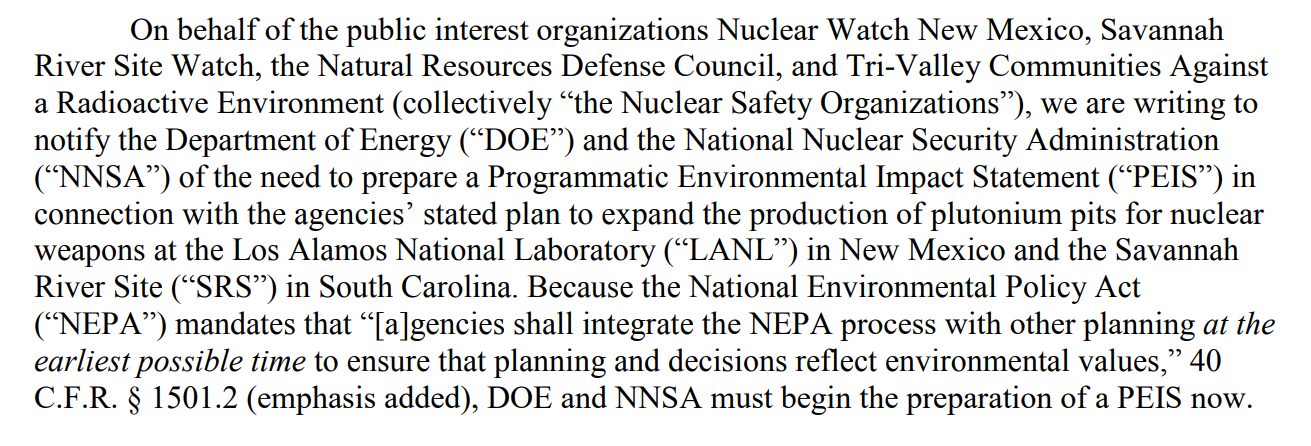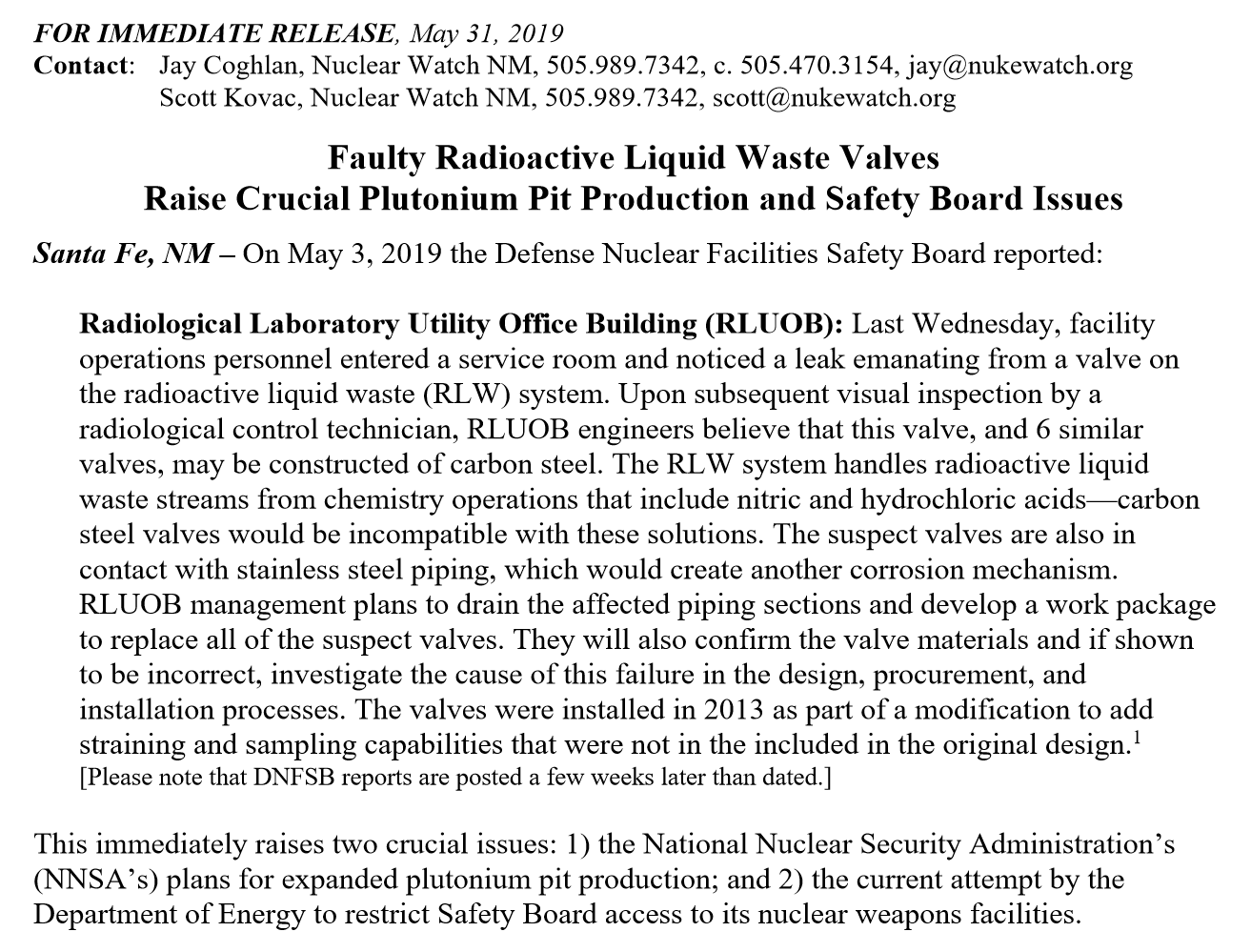Lab Chromium Contamination Confirmed on San Ildefonso Pueblo Land
Comprehensive Cleanup Needed Instead of More Nuclear Weapons
The New Mexico Environment Department has announced:
“A toxic chromium plume from Los Alamos National Laboratory has spread beyond Lab boundaries onto Pueblo de San Ildefonso land for the first time, with contamination exceeding state groundwater standards… These new results are conclusive evidence that the U.S. Department of Energy’s efforts to contain the chromium plume have been inadequate.”
In reality, chromium groundwater contamination probably migrated beyond the LANL/San Ildefonso Pueblo boundary long ago, with past Lab maps of the plume “magically’ stopping at the border. In the past, tribal leadership has commented that it was fortunate that the contamination stopped there, but that any future indications of groundwater contamination on Pueblo land could have serious consequences. The San Ildefonso Pueblo is a sovereign Native American tribal government.
As late as the late 1990s the Lab was falsely claiming that groundwater contamination was impossible because underlying volcanic tuff is “impermeable.” [1] This ignored the obvious fact that the Parajito Plateau is heavily seismically fractured, providing ready pathways for contaminant migration to deep groundwater. By 2005 even LANL acknowledged that continuing increasing contamination of the regional aquifer is inevitable.[2] Some 300,000 northern New Mexicans rely upon the aquifer for safe drinking water. The potential serious human health effects (including cancer) caused by chromium contamination was the subject of the popular movie Erin Brockovich.
LANL chromium plume spreads onto San Ildefonso Pueblo land, NMED says
Nuclear Watch New Mexico executive direcor Jay Coghlan sees PF-4 as being a bigger scale — and having bigger risks — than the other aging buildings.
“PF-4 is not unique in being old,” Coghlan said. “However, PF-4 is totally unique in currently being the only facility that can process large amounts of plutonium … particularly including plutonium pit production. I think, in part, that’s why the Safety Board focuses more on PF-4 than, to my knowledge, than any other single individual facility.”
By:Patrick Lohmann | November 13, 2025 sourcenm.com
An underground plume of toxic chromium has spread from Los Alamos National Laboratory to Pueblo de San Ildefonso land, state Environment Department officials announced Thursday.
The discovery marks the first time the plume has been detected within the pueblo boundaries, officials said in a news release, though they added the plume’s spread does not pose imminent threats to drinking water in the pueblo or in Los Alamos County. That’s because the plume is not near any known private or public wells, officials said.
Long-term ingestion of hexavalant chromium can cause serious health problems or increase risk of certain cancers.
US Stands Alone Defying UN Vote on Nuclear Test Ban Treaty
Could the LDS Church end an ongoing nuclear weapons project? These veteran activists think so.
By Thalif Deen, Inter Press Sevice | November 12, 2025 ipsnews.net
UNITED NATIONS, Nov 12 2025 (IPS) – The US took another step backward –to break ranks with the United Nations– when it voted against a draft resolution calling for the entry into force of the Comprehensive Nuclear-Test-Ban Treaty (CTBT).
The negative vote followed an announcement by President Trump last month that the US plans to resume nuclear testing after a 33-year hiatus. The US stood alone on the UN vote, which was supported by almost all member States in the General Assembly’s First Committee.
The resolution was adopted by an overwhelming majority: with 168 votes in favor, with one against (United States) and 3 abstentions (India, Mauritius, Syria).
During Trump’s first term, the US abstained on the vote. And in other years they had been voting in favour.
Jackie Cabasso, Executive Director, Western States Legal Foundation, which monitors and analyzes U.S. nuclear weapons programs and policies, told IPS the chaos and uncertainty arose from Trump’s factually-challenged social media post that “because of other countries testing programs, I have instructed the Department of War to start testing our Nuclear Weapons on an equal basis.”
The U.S. government’s first ever “No” vote, on the annual UN resolution in support of the Comprehensive Test Ban Treaty (CTBT), raises further troubling questions about U.S. intentions.
Harking to the MX, Utahns call on LDS Church President Oaks to speak out against nuclear missile being developed in Utah
Could the LDS Church end an ongoing nuclear weapons project? These veteran activists think so.
THE SALT LAKE TRIBUNE | November 9, 2025 sltrib.com
Decades ago, peace activists helped keep a major nuclear weapons system out of Utah with help from key figures, chiefly Spencer W. Kimball, then the president of The Church of Jesus Christ of Latter-day Saints.
Now some of those same individuals are calling on the church’s newly ascended president, Dallin H. Oaks, to follow in his predecessor’s footsteps and speak out against the federal government’s development of a new generation of nuclear missile, known as Sentinel, partly in the Beehive State.
“The arms race continues,” the group of 12 Utahns and one former resident write in a letter mailed to church headquarters in early October, “and a new moral challenge faces” the leaders of the Utah-based faith.
Nuclear Weapons Issues & The Accelerating Arms Race: November 2025
Nuclear weapons:
The government shutdown has impact:
National Nuclear Security Agency confirms 152 furloughed at offices in Albuquerque, Los Alamos
Only 14 employees remain at the two sites By: Danielle Prokop-October 22, 2025
The NNSA confirmed 152 New Mexico employees charged with overseeing national laboratories’ nuclear weapons work were furloughed on Oct. 20, 2025. (Courtesy of NNSA)
The federal government this week sent home more than 150 federal New Mexico employees charged with overseeing national laboratories’ nuclear weapons work, with only 14 employees across two sites remaining at work, the National Nuclear Security Agency confirmed to Source NM.
The furloughs include 71 employees at NNSA’s Los Alamos field office and 81 at the Sandia National Laboratories location, NNSA Deputy Director of Communications Laynee Buckels told Source NM in an email. Seven employees remain at each site, working without pay, she said.
The field offices are responsible for “ensuring compliance with federal contracts to manage and operate the national security assets,” according to the NNSA website
To date there doesn’t appear to be furloughs at LANL, whose employees technically work for a contractor rather than the federal government. Congress is not furloughed, but Speaker Mike Johnson has kept the House out of session. As a result, legislation has come to a screeching halt.
Los Alamos’ plutonium facility safety systems need improvement, oversight board says
Nuclear Watch New Mexico executive direcor Jay Coghlan sees PF-4 as being a bigger scale — and having bigger risks — than the other aging buildings.
“PF-4 is not unique in being old,” Coghlan said. “However, PF-4 is totally unique in currently being the only facility that can process large amounts of plutonium … particularly including plutonium pit production. I think, in part, that’s why the Safety Board focuses more on PF-4 than, to my knowledge, than any other single individual facility.”
By Alaina Mencinger amencinger@sfnewmexican.com | November 7, 2025 santafenewmexican.com
An independent oversight agency wants to see improved safety systems at the facility at the heart of Los Alamos National Laboratory’s plutonium pit mission: PF-4.
The Defense Nuclear Facilities Safety Board reported what it believes to be gaps in a safety analysis drafted for PF-4 and delays in upgrades to safety systems in a letter last month to Energy Secretary Chris Wright.
“Maintaining momentum for these safety infrastructure projects is more important in light of the issues with the safety analysis,” the board wrote in the letter dated Oct. 10. It was signed by former acting chairman Thomas Summers.
LANL Prioritizes Plutonium “Pit” Bomb Core Production Over Safety
The independent Defense Nuclear Facilities Safety Board recently released its Review of the Los Alamos Plutonium Facility Documented Safety Analysis. It concluded that:
“While LANL facility personnel continue to make important upgrades to the Plutonium Facility’s safety systems, many of those projects have encountered delays due to inconsistent funding and other reasons. DOE and LANL should consider prioritizing safety-related infrastructure projects to ensure that the Plutonium Facility safety strategy adequately protects the public, as the facility takes on new and expansive national security missions.” (Page 24)
In early October 2024, the Department of Energy’s semi-autonomous National Nuclear Security Administration (NNSA) announced with great fanfare that the Los Alamos Lab had produced its first “diamond stamped” plutonium pit for the nuclear weapons stockpile. Tens of billions of taxpayers’ dollars have been sunk into LANL’s long delayed and over budget pit production program. Given no further announcements, it is not currently known whether or not the Lab is meeting its congressionally required production goals. Endemic nuclear safety problems have long been an intractable issue, at one point even forcing a three-year halt to plutonium operations at LANL’s Plutonium Facility-4 (“PF-4”).
In its recent Review, the Safety Board reported:
“The [2009] Plutonium Facility safety basis described very large potential [radioactive] dose consequences to the public following seismic events…. DOE committed to upgrade and seismically qualify the ventilation system, with a particular focus on a specific ventilation subsystem…”
“As the only facility in the DOE complex that can process large quantities of plutonium in many forms, [PF-4] represents a unique capability for the nation’s nuclear deterrent. The Board has long advocated for the use of safety-related active confinement systems in nuclear facilities for the purposes of confining radioactive materials…Passive confinement systems are not necessarily capable of containing hazardous materials with confidence because they allow a quantity of unfiltered air contaminated with radioactive material to be released from an operating nuclear facility following certain accident scenarios. Safety related active confinement ventilation systems will continue to function during an accident, thereby ensuring that radioactive material is captured by filters before it can be released into the environment… (Page 2, bolded emphases added)
AP: Trump appears to suggest the US will resume testing nuclear weapons for first time in 30 years
“For Trump, who has cast Russia as a “paper tiger” for failing to swiftly subdue Ukraine, the message is that Russia remains a global military competitor, especially on nuclear weapons, and that Moscow’s overtures on nuclear arms control should be acted on.”
By MICHELLE L. PRICE and CHRIS MEGERIAN | October 30, 2025 apnews.com
BUSAN, South Korea (AP) — President Donald Trump appeared to suggest the U.S. will resume testing nuclear weapons for the first time in three decades, saying it would be on an “equal basis” with Russia and China.
The Kremlin pointed out that a global ban on nuclear tests has remained in place, but warned that if any country resumes nuclear testing Russia would follow suit.
There was no indication the U.S. would start detonating warheads, but Trump offered few details about what seemed to be a significant shift in U.S. policy.
He made the announcement on social media minutes before he met with Chinese leader Xi Jinping on Thursday in South Korea. He offered little clarity when he spoke to reporters later aboard Air Force One as he flew back to Washington.
The U.S. military already regularly tests its missiles that are capable of delivering a nuclear warhead, but it has not detonated the weapons since 1992. The Comprehensive Nuclear Test Ban Treaty, which the U.S. signed but did not ratify, has been observed since its adoption by all countries possessing nuclear weapons, North Korea being the only exception.
REUTERS: Trump tells Pentagon to immediately resume testing US nuclear weapons
“Russia – which tested a new nuclear-powered cruise missile on October 21, held nuclear readiness drills on October 22 and tested a new nuclear-powered autonomous torpedo on October 28 – said it hoped Trump had been properly informed that Moscow had not tested a nuclear weapon itself.”
By Trevor Hunnicutt, Ismail Shakil and Kanishka Singh | October 30, 2025 reuters.com
VIEW THE RECORDING: Santa Fe Ecumenical Conversations Towards Nuclear Disarmament at Santa Maria de la Paz Catholic Community – Monday, October 27
Archbishop John C. Wester and NukeWatch New Mexico presented a special evening at Santa Maria de la Paz Catholic Community on Monday, October 27, from 6:00 to 8:00 p.m. MT. Following a presentation from NukeWatch executive director Jay Coghlan on U.S. nuclear weapons “modernization,” the Archbishop shared reflections from his pastoral letter, Living in the Light of Christ’s Peace, and speak about the importance of dialogue and hope in working toward nuclear disarmament.
View the recording at https://www.youtube.com/watch?v=9LFmQzMoJds&t=1s
Trump Orders Nuclear Weapons Testing for New Nuclear Arms Race
New Plutonium “Pit” Bomb Cores at Los Alamos Lab Could Make It Real
Just minutes before meeting with Chinese President Xi Jinping, Trump posted on his Truth Social media platform that “Because of other countries testing programs, I have instructed the Department of War to start testing our Nuclear Weapons on an equal basis. That process will begin immediately.” House Speaker Mike Johnson soon followed on CNN saying, “I think it is an obvious and logical thing to ensure that our weapons systems work.”
No other countries are currently testing nuclear weapons (the last was by North Korea in 2017). Further, any nuclear weapons tests by the U.S. would be performed by the Department of Energy (whose last test was in 1992), not the Department of War (until recently the Department of Defense). Trump was likely referring to Vladimir Putin’s recent claims of a new nuclear powered cruise missile and a tsunami-causing nuclear-armed torpedo that could threaten America’s coastal cities. In addition, China is dramatically expanding its own fleet of intercontinental ballistic missiles.
But central to all this is the U.S.’ own $2 trillion “modernization” program that will rebuild every nuclear warhead in the planned stockpile with new military capabilities and produce new-design nuclear weapons as well. This so-called modernization program will also build new nuclear weapons production facilities expected to be operational until ~2080, and buy new missiles, subs, and bombers from the usual rich defense contractors, all to keep nuclear weapons forever.
‘Nuclear weapons are blasphemous’: Archbishop Wester continues disarmament push with talk
This event was organized by the “Santa Fe Ecumenical Conversations Towards Nuclear Disarmament” group at the Santa Maria de la Paz parish near the Santa Fe Community College. They kindly invited NukeWatch to speak before Archbishop Wester for what turned out to be a wonderful event. The full recording can be viewed at https://www.youtube.com/@SMDLP/streams
By Cormac Dodd cdodd@sfnewmexican.com | October 28, 2025 santafenewmexican.com
Despite saying he has received a somewhat muted response from the local faithful, Santa Fe’s Catholic archbishop is still pushing nuclear disarmament as vital to humanity’s spiritual well-being and continued existence.
“I think nuclear weapons are blasphemous, because I think nuclear weapons are humanity’s attempt to build a Tower of Babel, an attempt to eat from the apple of the tree of the Garden of Eden, to become like God, to become gods,” Archbishop John C. Wester said in a roughly 30-minute address at Santa Maria de la Paz Catholic Church south of Santa Fe.
“In humility, we must avoid inventing anything that, in a matter of hours, can destroy what God has created,” the leader of the Archdiocese of Santa Fe continued. “The story of Adam and Eve is archetypal, I think: When human beings try to become as God, they lose the Garden of Eden and they must endure the cruel reality of paradise lost.”
The archbishop’s comments followed a journey he undertook to Japan on the 80th anniversary of the U.S. military’s decision to drop atomic bombs on Hiroshima and Nagasaki toward the end of World War II. He spoke in front of an audience of about 50 people — who gave Wester a standing ovation — at Monday’s event
In a Looming Nuclear Arms Race, Aging Los Alamos Faces a Major Test
The lab where Oppenheimer developed the atomic bomb is the linchpin in the United States’ effort to modernize its nuclear weapons. Yet the site has contended with contamination incidents, work disruptions and old infrastructure.
By Alicia Inez Guzmán | October 28, 2025 The New York Times nytimes.com
In a sprawling building atop a mesa in New Mexico, workers labor around the clock to fulfill a vital mission: producing America’s nuclear bomb cores.
The effort is uniquely challenging. Technicians at Los Alamos National Laboratory must handle hazardous plutonium to create the grapefruit-size cores, known as pits. They do so in a nearly 50-year-old building under renovation to address aging infrastructure and equipment breakdowns that have at times disrupted operations or spread radioactive contamination, The New York Times found.
Now, the laboratory is under increasing pressure to meet the federal government’s ambitions to upgrade the nation’s nuclear arsenal. The $1.7 trillion project includes everything from revitalizing missile silos burrowed deep in five states, to producing new warheads that contain the pits, to arming new land-based missiles, bomber jets and submarines.
But the overall modernization effort is years behind schedule, with costs ballooning by the billions, according to the Congressional Budget Office. In 2018, Congress charged Los Alamos with making an annual quota of 30 pits by 2026, but by last year it had produced just one approved for the nuclear stockpile. (Officials have not disclosed whether more have been made since then.)
*The featured image differs from the article photo due to usage rights.
Why Putin’s ‘invincible’ nuclear-powered missile is more likely to become a disastrous ‘flying Chernobyl’ for Russia
The US abandoned efforts to build nuclear-powered missile weapons during the 1950s arms race with the Soviet Union as a nuclear-powered missile would effectively be a huge radiation risk.
Jeffrey Lewis, a nuclear nonproliferation expert at Middlebury College, described it as a “tiny flying Chernobyl,” referencing the Soviet power plant that melted down and covered a 1,600-mile area with toxic radiation…While Lewis believes the Burevestnik is only capable of subsonic speed and easy to intercept, he warned that Russia’s ambition poses a return to the Cold War era.
“NATO aircraft could intercept it. The problem is that Burevestnik is yet another step in an arms race that offers no victory for either side,” he wrote on X.
By Ronny Reyes | October 28, 2025 nypost.com
Russian strongman Vladimir Putin’s latest threats that Moscow is preparing to deploy its new “invincible” nuclear-powered cruise missile has drawn a rebuke from President Trump and a reminder of America’s own nuclear might.
But experts say the Burevestnik missile could end up being more like a disastrous “flying Chernobyl” for Russia — and proves Putin is actually nervous about the possibility of the US giving Tomahawk cruise missiles to Ukraine.
George Barros, of the Washington-based Institute for the Study of War, described Putin’s ominous Sunday announcement as a form of fear mongering from a Kremlin afraid that the US could give Kyiv a much more conventional weapon — the tried and true Tomahawk.
Russia tested new nuclear-powered Burevestnik cruise missile
“For Trump, who has cast Russia as a “paper tiger” for failing to swiftly subdue Ukraine, the message is that Russia remains a global military competitor, especially on nuclear weapons, and that Moscow’s overtures on nuclear arms control should be acted on.”
By Guy Faulconbridge and Lidia Kelly Tim Balk | October 26, 2025 reuters.com
- Russia tests nuclear-capable Burevestnik missile
- Missile flew for 14,000 km, 15 hours
- Putin says it can pierce any missile defences
Trump Administration Providing Weapons Grade Plutonium to Sam Altman
“If there were adults in the room and I could trust the federal government to impose the right standards, it wouldn’t be such a great concern, but it just doesn’t seem feasible.”
By: Joe Wilkins | October 24, 2025 futurism.com
With the economy the way it is these days, it’s nice to have a little walking around money.
Donald Trump certainly thinks so. Since his return to the White House, the president has labeled 440 federal properties for possible sale, leased 13.1 million acres of public land for strip mining, and held a fire sale for satellites developed by NASA’s Jet Propulsion Lab.
In one of his wildest money moves to date, the Financial Times reports that Trump is now offering companies access to plutonium from America’s arsenal of cold war nuclear missiles.
On Tuesday, the US Department of Energy (DOE) launched an application for interested parties to apply for access to a maximum of 19 metric tonnes — a little under 42,000 pounds — of weapons-grade plutonium, which has long been a key resource undergirding the US nuclear arsenal.
One of the companies anticipated to receive shipments of the fissile isotope from the DOE is Oklo, a “nuclear startup” backed — and formerly chaired — by OpenAI CEO Sam Altman. Earlier in October, Oklo was one of four US companies chosen by the DOE to join a new pilot program meant to rush the testing and approval of experimental reactor designs.
As the FT reports, we won’t know for certain until December 31, when the DOE announces the companies selected to purchase the plutonium, but it’s likely Oklo will be among them. That’s stirring up plenty of anxiety throughout the scientific community, who say the relaxed approach to nuclear development is a major cause for alarm.
“If there were adults in the room and I could trust the federal government to impose the right standards, it wouldn’t be such a great concern, but it just doesn’t seem feasible,” Edwin Lyman, a physicist with the Union of Concerned Scientists told the FT.
U.S. Agency That Protects Nuclear Arsenal to Furlough Workers
Jay Coghlan, the executive director of Nuclear Watch New Mexico, a private group that monitors the agency, said it was unclear if the furloughs would have any immediate effect on nuclear safety. “As a baseline, the nuclear safety officers have always been understaffed. There is simply not enough federal oversight as is. And then you’re talking about furloughing more,” he added.
By Tim Balk | October 17, 2025 nytimes.com
![]() The National Nuclear Security Administration said 1,400 workers would be affected by Monday.
The National Nuclear Security Administration said 1,400 workers would be affected by Monday.
Nuclear weapons safety oversight in decline with Trump, Biden inaction
The lone independent federal agency responsible for ensuring safety at U.S. nuclear weapons sites — including Hanford in Washington state — will lose its ability to issue recommendations for safer work by January if the Trump administration doesn’t replenish its board, which this month dwindles to one member.
By Patrick Malone | October 15, 2025 seattletimes.com
The Defense Nuclear Facilities Safety Board ensures adequate public health and worker safety by scrutinizing hazardous work conducted by the U.S. Department of Energy and its contractors that produce and maintain the nuclear arsenal. If the Trump administration and Congress don’t move quickly to populate the board, it will be incapable of issuing formal safety recommendations to the Energy Department, according to a report last month from the Government Accountability Office, Congress’ investigative arm.
If the board is without a quorum of at least three members for a year, “the agency would essentially be able to offer only nonbinding advice to DOE,” according to the report.
“The whole idea of having the board in place is to provide the optics in addition to the substance,” Nathan Anderson, a Washington state-based director in the GAO’s natural resources division, told The Seattle Times.
The board does not have regulatory or enforcement authorities, but its advice carries significant weight and cannot be easily dismissed or disregarded, the GAO report states. The board’s recommendations to the U.S. secretary of energy are published for public comment, and the secretary must respond in writing. The board also reports each year to selected congressional committees on its recommendations to the Energy Department and any outstanding safety problems.
FULL ORIGINAL ARTICLE (SEATTLE TIMES)
YOU CAN HELP SAVE THE DNFSB TODAY:
Continue reading
New Article about “Participatory Democracy in Action” Describes WIPP Permit Negotiations
Thanks to our friends at Concerned Citizens for Nuclear Safety for this article:
In an essay for NYU’s Democracy Project, David F. Levi, a former federal judge and director emeritus of the Bolch Judicial Institute at Duke Law, reflected on the negotiations he facilitated in New Mexico about the renewal of the hazardous waste permit for the Waste Isolation Pilot Plant (WIPP), a deep geologic repository for plutonium-contaminated waste generated in the fabrication of nuclear weapons. Judge Levi’s essay is entitled “Participatory Democracy in Action.” He wrote:
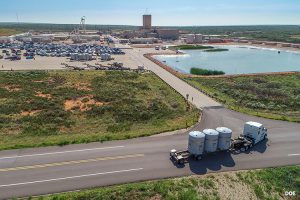 “A couple of years ago, I was asked to mediate a dispute between the U.S. Department of Energy (DOE) and the New Mexico Environment Department (NMED) concerning the renewal of a required state permit for DOE’s Waste Isolation Pilot Plant (WIPP), the nation’s only deep underground nuclear waste storage facility, located outside of Carlsbad, New Mexico. I thought I could help the two government entities but quickly came to realize that under the mediation procedures followed by New Mexico, the mediation would also involve citizen groups whose ultimate concurrence was essential to any complete resolution. This was entirely new to me.
“A couple of years ago, I was asked to mediate a dispute between the U.S. Department of Energy (DOE) and the New Mexico Environment Department (NMED) concerning the renewal of a required state permit for DOE’s Waste Isolation Pilot Plant (WIPP), the nation’s only deep underground nuclear waste storage facility, located outside of Carlsbad, New Mexico. I thought I could help the two government entities but quickly came to realize that under the mediation procedures followed by New Mexico, the mediation would also involve citizen groups whose ultimate concurrence was essential to any complete resolution. This was entirely new to me.
“In this case, there were seven such citizen groups entitled to participate and representing a variety of points of view. There was one group representing some of the government and business leaders of the town of Carlsbad who favored permit renewal on terms ensuring the continued long-term operation of WIPP. There were six groups expressing a variety of concerns about nuclear waste coming to New Mexico. They sought a more restrictive permit.
“To my astonishment, over the course of four full days, we worked through the multitude of issues and came to complete agreement. Something magical had happened. Thanks to the goodwill of the DOE and its contractor, the remarkable daily attendance and attentiveness of the NMED Secretary and the measured and well-informed way in which the various citizen groups made their points, we were able to find consensus and craft permit language that was acceptable to everyone.
“For me, as a former judge and mediator, the experience was thrilling. It was an experience of participatory democracy in action that made me proud of our fellow citizens and our government. Three aspects of the experience stand out. First, everyone in the room had taken responsibility for the way in which our nation’s only deep underground nuclear storage facility would be operated for the next 10 years. The citizen participants were not just making suggestions; they were assuming many of the attributes of decision makers. Second, all participants were advocating, compromising, and collaborating on behalf of what they saw as the public interest. These are the essential skills of democracy—the civic virtues so central to the Founders’ vision of what would make democracy work in America—and they require practice. Finally, over four days around a table, the citizens were able to take the measure of the DOE and NMED representatives. They came to realize, as I did, that these public servants, as well as the DOE contractor, were very well-informed, experienced, and intentioned. The government representatives had a similar experience of coming to appreciate the citizen questions and points of view. A government that relies on trust needs this kind of interaction to maintain that trust.
“It seems our democracy would be strengthened if we could extend the benefits of this kind of participatory structure to other areas of our legal and regulatory systems.”
“In Democracy in America, Alexis de Tocqueville made some of these points in reference to the jury trial in civil cases. He emphasized the importance of the civil jury trial as a free “public school” [https://contextus.org/Tocqueville,_Democracy_in_America_(1835),_Book_I,_Chapter_XVI_Causes_Mitigating_Tyranny_In_The_United_States_(Part_II).13?ven=Gutenberg&lang=en]  educating jurors in the democratic virtues and skills and teaching them to assume responsibility. In the same vein, every trial judge I know would attest to the importance of the jury experience for building confidence in the courts. After a trial, judges often hear words of gratitude from jurors who are deeply impressed by the legal process and are honored to have participated despite their initial dismay at being called to jury service. Sadly, the number of jury trials has diminished, particularly in federal court. Reversing that trend is a worthy goal, particularly for a branch of government that depends so heavily on public confidence.
educating jurors in the democratic virtues and skills and teaching them to assume responsibility. In the same vein, every trial judge I know would attest to the importance of the jury experience for building confidence in the courts. After a trial, judges often hear words of gratitude from jurors who are deeply impressed by the legal process and are honored to have participated despite their initial dismay at being called to jury service. Sadly, the number of jury trials has diminished, particularly in federal court. Reversing that trend is a worthy goal, particularly for a branch of government that depends so heavily on public confidence.
“As a final reflection: any persons involved as litigants will have an experience of the legal system. The experience can advance their sense of agency and participation, their ability to disagree civilly, and their trust in the courts. But how can these objectives be obtained when so many Americans cannot afford a lawyer? We can do so much better to provide understanding of and access to our justice system.”
The six New Mexico based non-governmental organizations were Citizens for Alternatives to Radioactive Dumping (CARD), Concerned Citizens for Nuclear Safety (CCNS), Conservation Voters New Mexico (CVNM), Nuclear Watch New Mexico, Southwest Alliance for a Safe Future (SAFE), and Southwest Research and Information Center (SRIC). The individual was Steve Zappe, a grandfather and former NMED WIPP Program Manager.
“A House of Dynamite” New Netflix Nuclear Catastrophe Film: Fiction, for Now
The reviews are rolling in for “A House of Dynamite,” which premiered in Europe earlier this month before coming to the U.S. on October 10th, with a full Netflix release scheduled for the 24th. Here’s the trailer, and see the schedule for Santa Fe theater showings here:
This Week! Santa Fe Theater Screenings for the Film “A House of Dynamite”
I attended one of these screenings last night, and I’ll let the professional critic reviews give the gist:
The Kathryn Bigelow thriller looks at what might happen if a ballistic missile were headed to the U.S. The director hopes the movie will start a conversation. New York Times: At Venice, ‘A House of Dynamite’ Is Scarier Than Most Horror Films
“The Netflix thriller captures from multiple perspectives the White House response to an unattributed missile launch headed for a major U.S. city in the harrowing 20 minutes until projected impact…”An unrelenting chokehold thriller so controlled, kinetic and unsettlingly immersive that you stagger out at the end of it wondering if the world will still be intact.” ‘A House of Dynamite’ Review: Idris Elba and Rebecca Ferguson in Kathryn Bigelow’s Precision-Tooled, Viscerally Unsettling Nail-Biter
“Told from the perspective of soldiers at a remote Alaskan missile base, staffers in the White House situation room, military officials at US Central Command (CENTCOM), and the president of the United States, the film weaves an overlapping timeline to show how the United States would respond to a missile attack…The film doesn’t want viewers to ask themselves how to thwart a nuclear attack on the United States. Rather, it wants the viewer to question the value of having nuclear weapons at all. ‘None of this makes sense,’ the President (Idris Elba) bemoans, ‘Making all these bombs and all these plans.'”
“A House of Dynamite is a terrifying examination of how terribly wrong things can go even with highly competent people in charge…But that’s also not necessarily the world we’re living in…The film shows why the worst can happen, even when competent, well-meaning people are trying to do the right thing.
But what if competence and decency are in short supply?” A House of Dynamite: Bigelow’s latest thriller shows why nuclear bombs are only part of the danger
This film left me reeling with tension and anxiety and exactly as the Times article titles it, is scarier than most horror films. Unlike ‘Oppenheimer,’ which largely glorified the invention of the atomic weapon, ‘A House of Dynamite’ makes it impossible to ignore the threat that nuclear weapons pose to our world. Working backwards from perspectives, and focused on how we can actually improve our odds of keeping this story a fictional one, here is what struck me most about this film:
-
-
Only one person decides what happens. But the real threat isn’t one reckless leader — it’s a reckless system. The final segment of the film features the “nuclear football” heavily, a briefcase containing launch procedures and options. In the United States, the president holds the sole and absolute authority to order the use of nuclear weapons. In the film, there are many voices in the President’s ear, but two primary perspectives quickly emerge after the defense fails and the ICBM remains inbound to its U.S. target: “One side advocates a retaliatory strike; the other, nothing. ‘It’s surrender or suicide,’ one adviser tells the President,” – thebulletin.org. The military aide carrying the nuclear football is tasked with providing the President the list of options if retaliation is chosen. An absolute must-read, Daniel Ellsberg’s book “The Doomsday Machine” breaks down many of the themes in the film with pure and terrifyingly honest account of Cold War-era nuclear strategy. In terms of launch authority, he describes how the inherent instability of the delegated command structure of the nuclear apparatus makes accidental or unwanted war an ever-present danger.
-
LANL tritium containers to head to Texas after last treatment
Four flanged tritium waste containers have been depressurized and transported to Los Alamos National Laboratory’s Weapons Engineering Tritium Facility, where they will be treated further before heading out-of-state for disposal.
By Alaina Mencinger amencinger@sfnewmexican.com | October 15, 2025 santafenewmexican.com
The containers’ final destination is Waste Control Specialists, a West Texas facility that handles the storage and disposal of radioactive waste.
The more than 1,300-acre facility in Andrews County is located on an approximately 14,000 acre property, which is sited on a thick clay formation which the company describes as “nearly impermeable.”
New documents have been added to the Los Alamos Legacy Cleanup Contract Electronic Public Reading Room.
All legacy cleanup documents required to be posted after April 30, 2018, are available on the site linked above.
For legacy cleanup documents that were posted prior to April 30, 2018, please visit the LANL electronic public reading room.
- Review, Notice of Completion of Off-Site Waste Shipments for Final Disposal, Activities 3.1.5, 3.1.8, and 3.3.4, Compliance Plan, Site Treatment Plan, Federal Facility Compliance Order Los Alamos National Laboratory [July 31, Aug. 21, 2025]
https://ext.em-la.doe.gov/GovFTPFiles/api/GetFiles/GetFile?fileName=EMID-703933_NMED_Review_STP_Shpmt_Jul_31_Aug_21_101525.pdf
Strong Political and Public Opposition Means Consolidated Interim Storage Facility (CISF) in NM “Impossible in the Near Future”
NEW UPDATE OCTOBER 10, 2025:
Holtec abandons plan to build New Mexico storage facility for spent nuclear fuel
This is excellent news. The Governor and state legislature (specifically Senator Jeff Steinborn and Representative McQueen) are to be commended for not allowing New Mexico to become the nation’s dumping ground for highly radioactive commercial spent fuel rods, especially when the Land of Enchantment has never had its own nuclear energy plant. Hard work from many New Mexicans made this happen.
So-called “interim” storage would never be interim when the federal government has failed for more than four decades to find a permanent repository for these lethal wastes. This also shows how hollow all the hype is about the claimed renaissance of nuclear power, when on the front end the industry can’t survive without taxpayer handouts, and on the back end can’t solve its radioactive waste problem.
Holtec’s quote that “New Mexico’s acquiescence is necessary” for interim storage to go forward is interesting, implying that we have to surrender as the nuclear colony that we are. Well, guess what, we didn’t surrender, and I predict you’ll see more of this. Moreover, whether you’re pro-nuclear or anti-nuclear, Holtec is an ethically questionable company, which is why the attorneys general of New Jersey and Massachusetts have sued it.
Adiós and good riddance, Holtec!
New York Times: Tax Break Scandal Leads to $5 Million Fine for N.J. Energy Company
SEE MORE:
Nuclear Weapons Issues & The Accelerating Arms Race: September 2025
Nuclear Weapons Update:
Putin has offered Trump a one-year extension of the numerical cap on strategic nuclear weapons in the new Strategic Arms Reduction Treaty which is 1,550 warheads (however, B52s are counted as one warhead while they can carry a dozen). New START expires in February 2026, which will be the first time the world will be without any nuclear arms control treaties since the mid-1970s. Trump has said it sounded like a good idea.
Note: New START ratification in 2010 provided the opportunity for Republicans in the Senate to attach the condition of $88 billion for nuclear weapons “modernization” that has since metastasized to ~$2 trillion. Nuclear disarmament must be prioritized as the ultimate goal over simply continued arms control.
A mere extension of the numerical cap would not involve Congressional ratification. The extension of New START’s numerical cap is in part to allow for a year in which to begin negotiations for a treaty replacement.
Plutonium Pit Production:
A draft plutonium pit production programmatic environmental impact statement is expected to be released next year in early 2026.
Accelerating Arms Race:
Is North Korea set to become world’s ‘fourth ICBM power’ after missile breakthrough? | Park Chan-kyong | South China Morning Post | September 11, 2025
A new era in North Korea’s missile programme may be dawning, as analysts warn of an imminent test launch of an intercontinental ballistic missile capable of carrying multiple warheads to the US mainland. Fresh from his appearance at China’s Victory Day parade in Beijing last week, North Korean leader Kim Jong-un personally oversaw the trial of a lighter, more robust solid-fuel ICBM engine, state media reported on Tuesday, touting the achievement as a “strategic” breakthrough.
Saudi Arabia signs a mutual defense pact with nuclear-armed Pakistan after Israel’s attack on Qatar | MUNIR AHMED & JON GAMBRELL | AP NEWS | September 18, 2025
DUBAI, United Arab Emirates (AP) — Pakistan’s defense minister says his nation’s nuclear program “will be made available” to Saudi Arabia if needed under the countries’ new defense pact, marking the first specific acknowledgment that Islamabad had put the kingdom under its nuclear umbrella.
Defense Minister Khawaja Mohammad Asif’s comments underline the importance of the pact struck this week between Pakistan and Saudi Arabia, which have had military ties for decades.
The move is seen by analysts as a signal to Israel, long believed to be the Middle East’s only nuclear-armed nation. It comes after Israel’s attack targeting Hamas leaders in Qatar last week killed six people and sparked new concerns among Gulf Arab nations about their safety as the Israel-Hamas war devastated the Gaza Strip and set the region on edge.
Russia suspected of helping North Korea build nuclear submarines, Seoul investigating | Park Chan-kyong | South China Morning Post | September 18, 2025
South Korea is investigating reports that Russia has supplied North Korea with nuclear submarine reactor modules, a move analysts see as highly plausible and one that could mark a breakthrough in Pyongyang’s decades-long push for a nuclear-powered navy… At the 8th Party Congress in January 2021, North Korea declared five core defence goals, including the development of nuclear-powered submarines and submarine-launched strategic nuclear weapons.
China Hardens Military Stance Against U.S. With Nuclear Weapons and Tough Talk | Brian Spegele | The Wall Street Journal| September 18, 2025
China played down its rapidly rising military might for years. In the past few weeks, Beijing has broadcast a steady drumbeat of firepower displays and muscular rhetoric, carrying an unmistakable warning for the U.S… Part of China’s confidence stems from the rapid growth of its firepower. The Pentagon estimates that China’s stockpile of nuclear warheads has more than doubled since 2020, alongside a growing array of options to launch those weapons, from mobile ground-launch systems to increasingly stealthy submarines.
Holtec Pulls Out of New Mexico Spent Nuclear Fuel Interim Storage Project
Holtec International has confirmed it is canceling plans to build a consolidated interim storage facility for spent nuclear fuel in southeastern New Mexico.
By Radwaste Solutions | October 9, 2025 ans.org
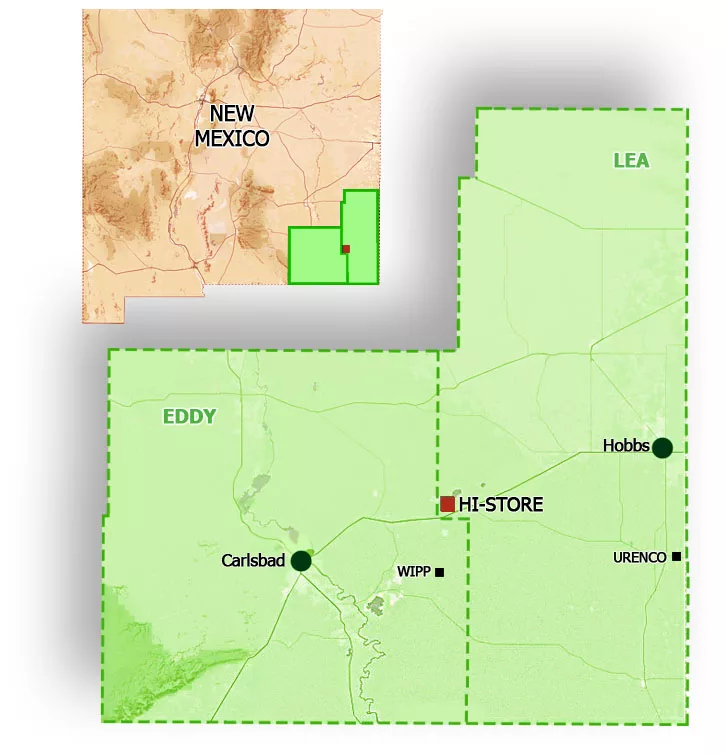
Named the HI-STORE CISF, the facility would have stored up to 10,000 canisters of commercial SNF on land owned by the Eddy-Lea Energy Alliance (ELEA) near the towns of Carlsbad and Hobbs.
“After discussions with our longtime partner in the HI-STORE project, the Eddy-Lea Energy Alliance, and due to the untenable path forward for used fuel storage in New Mexico, we mutually agreed upon canceling the agreement. This allows for ELEA to work to redevelop the property in a manner that fits their needs and allows Holtec to work with other states who are amenable to used fuel storage based on the recent DOE work on public education and outreach,” Holtec said in a statement (emphasis added).
Following the U.S. Supreme Court’s June ruling in NRC v. Texas, which found that petitioners did not have standing to challenge the Nuclear Regulatory Commission’s licensing of Interim Storage Partners’ CISF in Texas, Holtec said it expected to have its HI-STORE CISF license reinstated, allowing the company to move forward with the project. Holtec and ISP’s NRC licenses were vacated by the 5th Circuit Court of Appeals in a 2023 ruling.
Despite the court’s decision, New Mexico Gov. Michelle Lujan Grisham said she remained committed to preventing the HI-STORE CISF from being built. In 2023, New Mexico passed a bill barring the storage and disposal of high-level radioactive waste in New Mexico without the state’s explicit consent.
The AI Doomsday Machine Is Closer to Reality Than You Think
“Most troubling to experts on AI and nuclear weapons is that it’s getting harder and harder to keep decisions about targeting and escalation for nuclear weapons separate from decisions about conventional weapons.”
“There is no standing guidance, as far as we can tell, inside the Pentagon on whether and how AI should or should not be integrated into nuclear command and control and communications,” says Jon Wolfsthal, director of global risk at the Federation of American Scientists.
By Michael Hirsh | September 2, 2025 politico.com
Jacquelyn Schneider saw a disturbing pattern, and she didn’t know what to make of it.
Last year Schneider, director of the Hoover Wargaming and Crisis Simulation Initiative at Stanford University, began experimenting with war games that gave the latest generation of artificial intelligence the role of strategic decision-makers. In the games, five off-the-shelf large language models or LLMs — OpenAI’s GPT-3.5, GPT-4, and GPT-4-Base; Anthropic’s Claude 2; and Meta’s Llama-2 Chat — were confronted with fictional crisis situations that resembled Russia’s invasion of Ukraine or China’s threat to Taiwan.
Director Kathryn Bigelow is Sounding the Nuclear Alarm – Washington Post New Review
“A House of Dynamite” asks: How would the White House respond in the face of a nuclear attack?
By Max Boot | October 2, 2025 washingtonpost.com
VIEW MORE: “A House Of Dynamite” Q&A w/ Director Kathryn Bigelow, Tracy Letts, Jared Harris, And More At New York Film Fest —
80th Commemorations of Ban the Bomb – Trinity, Hiroshima & Nagasaki Remembrances in New Mexico
Exchange Monitor: DNFSB makes agency fixes, but needs members, GAO finds
The Defense Nuclear Facilities Safety Board (DNFSB) has tackled all but a few third-party recommendations to improve its culture over the past decade but suffers from a depleted board, according to a new report.
By ExchangeMonitor | September 5, 2025 santafenewmexican.com
Progress is tough with the five-person board probably…
China Hardens Military Stance Against U.S. With Nuclear Weapons and Tough Talk
Xi positions Beijing as powerful center of new global order as security forum convenes in capital
By Brian Spegele | September 18, 2025 wsj.com
BEIJING—China played down its rapidly rising military might for years. In the past few weeks, Beijing has broadcast a steady drumbeat of firepower displays and muscular rhetoric, carrying an unmistakable warning for the U.S….
Saudi Arabia signs a mutual defense pact with nuclear-armed Pakistan after Israel’s attack on Qatar
While not specifically discussing the bomb, the agreement states “any aggression against either country shall be considered an aggression against both,” according to statements issued by both Pakistan’s Foreign Affairs Ministry and the state-run Saudi Press Agency.
By MUNIR AHMED and JON GAMBRELL | September 18, 2025 apnews.com
ISLAMABAD (AP) — Saudi Arabia and nuclear-armed Pakistan have signed a mutual defense pact that defines any attack on either nation as an attack on both — a key accord in the wake of Israel’s strike on Qatar last week.
The kingdom has long had close economic, religious and security ties to Pakistan, including reportedly providing funding for Islamabad’s nuclear weapons program as it developed. Analysts — and Pakistani diplomats in at least one case — have suggested over the years that Saudi Arabia could be included under Islamabad’s nuclear umbrella, particularly as tensions have risen over Iran’s atomic program.
COMMUNITIES FOR CLEAN WATER: LANL Radioactive Tritium Venting Fails to Provide Transparency, Assurance, and Respect for Local Communities
FOR IMMEDIATE RELEASE: September 18, 2025
Santa Fe, NM — As NNSA and LANL continue operations to depressurize Flanged Tritium Waste Containers, Communities for Clean Water (CCW) calls out federal agencies for issuing vague assurances instead of transparent, verifiable data — and for dismissing community concerns with contradictory and incomplete statements that disregard what independent experts have found, the Department of Energy’s (DOE) own legal obligations, and the New Mexico Environment Department’s (NMED) acknowledgment that LANL has a long record of compliance failures.
“How can our communities be expected to trust LANL when they won’t give us access to the raw, real-time monitoring data – independently verified by the EPA,” asks Joni Arends with Concerned Citizens for Nuclear Safety. “Without this transparency, LANL is continuing a legacy of empty assurances, not accountability.”
Key Concerns:
-
Lack of real-time transparency – Since Friday (Sept. 12), the public has been forced to rely on NMED’s Facebook page for piecemeal updates. While LANL’s website provides very brief daily summaries, no near-real-time monitoring dashboard from DOE, NNSA, or LANL has been made available.
-
Vague assurances, not real information – NNSA’s updates claim “no tritium was released” while simultaneously telling the public to expect “very low levels of tritium” for subsequent venting. Without numbers, monitoring data, or detection thresholds, these phrases do not provide reassurance.
-
Weather risks – LANL has not disclosed thresholds for wind, rain, or humidity that would postpone venting. Communities watch weather shifts in real time but are left in the dark about how safety decisions are being made.
-
Dismissal of public health concerns – When asked for plain-language guidance that NMED stated LANL would provide, LANL responded only with “no offsite impact anticipated.” This is not meaningful and reassuring guidance, it’s a blanket dismissal that disregards independent expert findings and fails to meet DOE’s obligations to protect vulnerable populations.
-
Ignoring daily lifeways – Avoiding Pueblo Feast Days is not enough. This is harvest season, when outdoor cultural events, youth programs, and farming are in full swing. LANL’s scheduling continues to disregard these realities.
Unanswered Questions
Independent experts and community advocates have raised critical unanswered questions:
-
Unclear “depressurization” – LANL said “no internal pressure was found” in a container, but also claimed it was “depressurized.” If no pressure existed, what was released?
-
Unanswered helium questions – NMED stated helium was released, but LANL has not explained its origin. Was it introduced at sealing of the outer container, or a decay product of tritium?
-
Monitoring limits undisclosed – LANL has not disclosed the detection limits of its monitoring equipment. Readings “indistinguishable from zero” could still mask releases.
DOE NNSA Gives Misleading Statements on Native America Calling
On a recent Native America Calling program, DOE NNSA’s Los Alamos Field Office Deputy Director Pat Moss compared LANL venting to global natural tritium stocks. Independent expert Dr. Arjun Makhijani pointed out this comparison as misleading: “The problem is not global background, but local contamination. If venting occurs in rain and calm winds, local rainfall could exceed U.S. drinking water standards by hundreds to thousands of times.”
In their most recent public meeting, LANL admitted that infants could receive three times the radiation dose as adults. During the interview, Dr. Makhijani pressed this point – if adults are modeled at 6 mrem, that means infants could be at 18 mrem, nearly double the EPA’s 10 mrem compliance limit. Instead of addressing this directly, Mr. Moss provided a stock line, “We will be compliant with the regulatorily imposed release threshold and will be doing the calculations per the regulation.”
That is exactly the problem – hiding behind regulatory caps while ignoring clear evidence that infants, our most vulnerable, face exposures above legal limits.
DOE NNSA also pointed to the Defense Nuclear Facilities Safety Board (DNFSB) – an independent federal oversight body created by Congress – as if it had declared the tritium venting operation as “fully protective of the public”. That is misleading. First, the DNFSB has been operating without a quorum for months, limiting its ability to issue independent recommendations. Second, what the Board staff said in its July 2025 presentation was that the overall nuclear safety risk to the public is low if DOE’s proposed controls are followed. The DNFSB has also flagged ongoing safety concerns at LANL including deficiencies in Area G’s safety analysis and risk to workers.
First of four containers of tritium waste at LANL has been vented
The first of four flanged tritium waste containers awaiting removal from Los Alamos National Laboratory has been vented, the New Mexico Environment Department announced Tuesday afternoon.
By Alaina Mencinger amencinger@sfnewmexican.com | September 16, 2025 santafenewmexican.com
The container can now be moved for treatment at LANL and then, eventually, to an off-site disposal area.
No internal pressure was found in the first container, according to the National Nuclear Security Administration, suggesting the inner containers in the flanged tritium waste container hadn’t leaked. Air monitoring did not show an increase of tritium beyond background levels, the federal agency wrote.
No tritium emissions were released, the Environment Department wrote in its Tuesday post on X, formerly Twitter. Both the state agency and the U.S. Environmental Protection Agency are monitoring the process.
The depressurization of the containers is set to continue at 7 a.m. Wednesday, although the NNSA noted the schedule is subject to change due to weather. The four containers will be vented one at a time over an estimated two-week period.
*The featured image differs from the article photo due to usage rights.
New Mexicans Can Save the DNFSB; Contact Our Senators Today
From our friends at Concerned Citizens for Nuclear Safety:
The independent Defense Nuclear Facilities Safety Board has been dwindling from a five-member board to one member and may disappear if we, the People, do not raise our voices to support its essential nuclear safety work. The Safety Board needs at least two new members. And that needs to get done by Saturday, October 18th. https://www.dnfsb.gov/about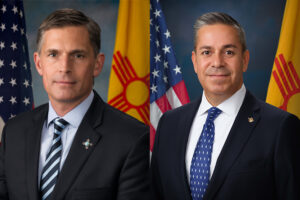
New Mexico U.S. Senators Heinrich and Lujan have key roles to play to ensure the Safety Board’s work continues unimpeded. https://www.heinrich.senate.gov/ and https://www.lujan.senate.gov/ Our voices of support are essential to ensure communities continue to receive the essential services of the Safety Board and its staff.
Right now members of the Safety Board’s staff are monitoring the venting of radioactive tritium from Area G at Los Alamos National Laboratory (LANL). Their expertise in the field of nuclear safety and their demonstrated competence and knowledge relevant to their independent investigative and oversight functions are an essential part of the process. They will be part of the follow-up once the venting of the four flanged tritium waste containers is completed. https://tewawomenunited.org/?s=tritium, https://www.ccwnewmexico.org/tritium, https://nuclearactive.org/
Not only does the Safety Board have staff at LANL, but also at Sandia National Laboratories in Albuquerque and at the Waste Isolation Pilot Plant, the burial site for plutonium contaminated nuclear weapons waste, near Carlsbad. https://ananuclear.org/facilities/
Russia suspected of helping North Korea build nuclear submarines, Seoul investigating
Analysts said such a technology transfer was plausible given Pyongyang’s support for Russia’s ongoing war in Ukraine
By Park Chan-kyong | September 18, 2025 scmp.com
South Korea is investigating reports that Russia has supplied North Korea with nuclear submarine reactor modules, a move analysts see as highly plausible and one that could mark a breakthrough in Pyongyang’s decades-long push for a nuclear powered navy…
Holy See tells nations at UN to end threat of nuclear weapons, even as deterrence
Amid a global arms race, ending the threat of nuclear war — and even the testing of nuclear weapons — is imperative, said the Holy See’s diplomat to the United Nations.
By Gina Christian, OSV News | September 8, 2025 catholicreview.org
Archbishop Gabriele G. Caccia, the Holy See’s U.N. permanent observer, shared his thoughts in a statement he delivered Sept. 4 at U.N. headquarters in New York, during the General Assembly High-level Plenary Meeting to Commemorate and Promote the International Day Against Nuclear Tests, observed that same day.
“The pursuit of a world free of nuclear weapons is not only a matter of strategic and vital necessity, but also a profound moral responsibility,” Archbishop Caccia in his remarks.
He pointed to the introduction of nuclear weapons — first detonated by the U.S. in 1945 over the Japanese cities of Hiroshima and Nagasaki, killing an estimated 110,000 to 210,000 people, during World War II — as unveiling to the world “an unprecedented destructive force.”
Historic peace vigil partially dismantled after Trump orders: ‘Take it down’
Law enforcement officials on Sunday removed parts of the White House Peace Vigil, which has sat just outside the White House for decades.
By Marissa J. Lang, The Washington Post | September 8, 2025 washingtonpost.com
But over the past week, it faced a new threat as Trump turned his attention to the vigil and federal officers picked apart the structure that shields protesters and their signs from the elements. The vigil is maintained by a rotating cast of volunteers who keep the protest going 24 hours a day, seven days a week.
On Friday, Brian Glenn, a correspondent for the conservative network Real America’s Voice, told the president during a gathering with reporters that there was “a blue tent” in front of the White House that was “an eyesore.” Trump initially said he was unaware of it, but he then quickly ordered its removal.
Photo by Sig. Chiocciola, Creative Commons: The White House Peace Vigil on March 30, 2025 staffed by volunteers, Philipos Melaku-Bello (left) and Joe Brown (right).
For 80 years, nuclear weapons have been the unused threat
Amid a global arms race, ending the threat of nuclear war — and even the testing of nuclear weapons — is imperative, said the Holy See’s diplomat to the United Nations.
By Matt Kelly, mkelly@virginia.edu, September 3, 2025 news.virginia.edu
In the 80 years since World War II, which ended with the use of two atomic bombs, the world has maintained a tenuous relationship with nuclear weapons.
Philip Potter, professor of public policy at the University of Virginia’s Frank Batten School of Leadership and Public Policy and director of the National Security Data and Policy Institute, said he worries about the current delicate nuclear balance.
“Eighty years of non-use is the product of both good diplomacy and a recognition of the potential consequences,” Potter said. “The fearsome power of nuclear weapons causes countries pause before they use them, but a great deal of work has also gone into nonproliferation and the management of crises to keep them away from the nuclear brink. In some ways the dynamics of the Cold War made managing the potential for nuclear confrontation easier.”
It’s a very different strategic scenario now, where there are nine nuclear powers and less capacity to manage them.
A House of Dynamite review – Kathryn Bigelow’s nuclear endgame thriller is a terrifying, white-knuckle comeback
★★★★★: Amid a global arms race, ending the threat of nuclear war — and even the testing of nuclear weapons — is imperative, said the Holy See’s diplomat to the United Nations.
By Peter Bradshaw, The Guardian | September 2, 2025 theguardian.com
Kathryn Bigelow has reopened the subject that we all tacitly agree not to discuss or imagine, in the movies or anywhere else: the subject of an actual nuclear strike. It’s the subject which tests narrative forms and thinkability levels.
Maybe this is why we prefer to see it as something for absurdism and satire – a way of not staring into the sun – to remember Kubrick’s (brilliant) black comedy Dr Strangelove, with no fighting in the war room etc, rather than Lumet’s deadly serious Fail Safe.
NEW UPDATED INFORMATION: MUST READ!!! PROVIDED BY: THE TULAROSA BASIN DOWNWINDERS CONSORTIUM — WHAT TO KNOW ABOUT THE COMPENSATION AVAILABLE THROUGH THE RECA PROGRAM
 SEEKING JUSTICE FOR THE UNKNOWING, UNWILLING, AND UNCOMPENSATED INNOCENT VICTIMS OF THE JULY 16, 1945 TRINITY BOMB
SEEKING JUSTICE FOR THE UNKNOWING, UNWILLING, AND UNCOMPENSATED INNOCENT VICTIMS OF THE JULY 16, 1945 TRINITY BOMB
A Message From Tina
The DOJ is now accepting claims and has provided guidance on the claims process. They will only accept mail in claims at this time. They have indicated that an electronic process will be implemented by the end of the year. For more information you can go to the DOJ website at: https://www.justice.gov/civil/reca
Please be careful when supplying documentation via the regular mail. If you decide to file this way you may want to send the documents via certified mail. Once the electronic process begins it will be easier to assure that your documents are safe and being handled properly with little to no risk.
There are organizations/attorneys who are soliciting people to file claims with them. They use all sorts of tactics to get people to believe their services are necessary and often guarantee results. Please be aware that if an entity files a RECA claim on your behalf they will charge a fee. They receive the check, deduct their fee, and then pay you.
There will be Radiation Exposure Screening and Education Program (RESEP) clinics in our State that will assist people with claims. The claims process is not necessarily difficult and we’ll be training people to assist with the application process when needed. We’ll also be looking to government agencies to cooperate in locating necessary documentation for the application process. PLEASE DO NOT TURN OVER YOUR RECORDS TO ANYONE THAT YOU ARE NOT SURE ABOUT. You can remain updated about the application process, the training we’re going to organize or other questions you might have by going to our website at: www.trinitydownwinders.com
What does the expansion of RECA do?
The Radiation Exposure Compensation Act program has been re-authorized and extended through Dec 31, 2028 but the application deadline is Dec 31, 2027.
Downwinders who lived in New Mexico for one year from 1944 through Nov. 1962 will be eligible and family members can apply on behalf of a deceased loved one.
There are 19 cancers that are covered by the expansion.
The cancers covered are:
Leukemia (except chronic lymphocytic Leukemia); Lymphoma (other than Hodgkins); Primary cancers of the Thyroid, Breast, Esophagus, Stomach, Pharynx, Small Intestine, Pancreas, Bile Duct, Gall Bladder, Salivary Gland, Urinary, Bladder, Brain, Colon, Ovary, Liver (unless cirrhosis/Hepatitis B present), and Lung.
Compensation for downwinders will be increased to $100,000 and Downwind coverage is expanded to cover the entire state of New Mexico
Coverage for uranium miners and workers would be expanded:
To workers through Dec 31, 1990
To core drillers and remediation workers
To cover additional kidney disease for uranium miners
To allow for combined work histories
What does this mean?
This is the biggest expansion of RECA in the history of the program and it wouldn’t have happened without the tireless advocacy of Senator Lujan, Representative Leger Fernandez, Senator Heinrich, Representative Stansbury and Representative Vasquez.
While it is a significant win, it still leaves out many impacted communities, including the parts of Nevada and Arizona not previously covered, along with Montana, Colorado, and Guam.
The 2-year extension will likely not be adequate time to get all the people in New Mexico who qualify enrolled and this bill does not have health care benefits for Downwinders. We will continue to fight for a longer extension and the addition of healthcare benefits. This is an important first step because it reinstates the program keeping it operational so people can continue to apply for benefits and get the help they need, and it shows that expansion is possible and provides an opportunity to address concerns raised about the cost of expansion.
We are grateful for the win and consider this a big step in the right direction. We look forward to the day that claims are successfully filed and the people of New Mexico begin to see the benefit of the expansion of RECA. Stay tuned for updates and many thanks to all of you who have stood together with us in this fight!Continue reading
Threads cast and crew suffered ‘trauma’ after film
The creators of a documentary about the making of nuclear apocalypse film Threads say many of the cast and crew had “suffered with the trauma of being involved”.
By Chloe Aslett, BBC News | August 29, 2025 bbc.com
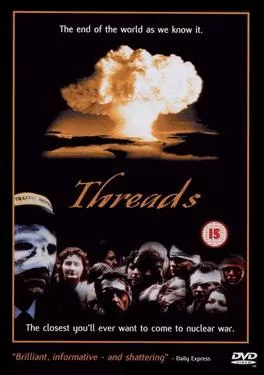
Threads, which tracks the aftermath of a nuclear attack on Sheffield, was first screened on the BBC on 23 September 1984 and fast became a cult classic.
Now filmmakers Craig Ian Mann and Rob Nevitt have spoken to more than 50 people involved in the making of the film for their documentary Survivors: The Spectre of Threads.
Mr Mann said: “[Threads] is a film that more than any I can think of everybody who worked on it it has impacted their lives in some way or another. Sometimes very positively and sometimes somewhat negatively.”
“There are people who have suffered the trauma of having been in and seen Threads,” he told BBC Radio Sheffield.
“There’s one participant in the documentary who has become a Doomsday prepper.
“He lives in America and has a bunker and canned food and weapons and he is prepared for the end of the world at any moment and that’s because he was in and saw Threads.”
Trump wants to stop nuclear proliferation. STRATCOM could play a major role.
Henry Sokolski, executive director of the Nonproliferation Policy Education Center, argues that the US needs to carry a new “big stick.”
By Henry Sokolski, Breaking Defense | August 29, 2025 breakingdefense.com

Last Monday, President Donald Trump pronounced, “We can’t let nuclear weapons proliferate.” Two days later, Secretary of State Rubio met with International Atomic Energy Agency (IAEA) Director General Rafael Mariano Grossi and recommitted the United States to preventing the proliferation of nuclear weapons.
After America’s bombing of Iran’s suspect nuclear sites, there’s cause to take these commitments seriously, but only if it’s more than a one off.
Emphasizing consistency is essential. Historically, America has backed nonproliferation in fits and starts. Under Presidents Gerald Ford and Jimmy Carter, the United States opposed the recycling of plutonium for commercial use because it was too close to bombmaking. It blocked reprocessing activities in South Korea, Taiwan, and Brazil.
Nuclear News Archive – 2022
[embeddoc url=”https://nukewatch.org/wp-content/uploads/2019/06/SRS-plutonium-bomb-plant6-14-19.pptx” download=”all” viewer=”microsoft”]
Forum addresses plutonium pit expansion at SRS
BY SARAH LEBLANC | augustachronicle.com
AIKEN — A forum regarding the Department of Energy’s proposed expanded production of plutonium pits at Savannah River Site was held Friday evening.
About 70 people gathered in the auditorium of the Aiken Municipal Building to hear speakers present information against the proposal and encourage the public to write to their representatives in opposition to the plan.
The Department of Energy has proposed to use the former Mixed Oxide Fuel Fabrication Facility as the location to produce about 50 plutonium pits per year. The pits make up the radioactive cores of nuclear weapons.
Tom Clements, director of Savannah River Site Watch, said the department should not rush into a new project at the MOX plant, which was shut down in October.
Critics raise concerns over proposed atomic bomb factory near Aiken
Anti-nuclear activists fired away Friday at what they said is a dangerous and little known plan to produce deadly atomic weapons components at the Savannah River Site near Aiken.
BY SAMMY FRETWELL | thestate.com
The federal government has proposed a multibillion dollar plutonium pit factory that could create as many as 1,700 jobs as part of an effort to make fresh plutonium, a major ingredient in atomic bombs.
But the proposed factory is raising concerns about its risk to the environment and the public, in addition to how it would be viewed by world leaders. Critics say the government may use the pits in a new type of nuclear weapon, instead of only replenishing the existing stockpile with fresh plutonium.
Savannah River Site Watch, a nuclear watchdog organization that tracks SRS, held a public meeting Friday night in Aiken County to brief people on the government’s plan at SRS, a 310-square-mile complex in western South Carolina.
“We don’t think people are really aware of what is going on: that this new mission is fraught with risk that could come to SRS,’’ Savannah River Site Watch director Tom Clements told The State.
Nuclear watchdog groups from New Mexico and California joined SRS Watch for the forum in Aiken County, where many SRS workers live. Before the Friday meeting, the groups held a news conference to voice concerns. The U.S. Department of Energy plans its own forum on the proposal June 27 in North Augusta.
Critics raise concerns over proposed atomic bomb factory near Aiken
Anti-nuclear activists fired away Friday at what they said is a dangerous and little known plan to produce deadly atomic weapons components at the Savannah River Site near Aiken.
JUNE 14, 2019 | BY SAMMY FRETWELL | thestate.com
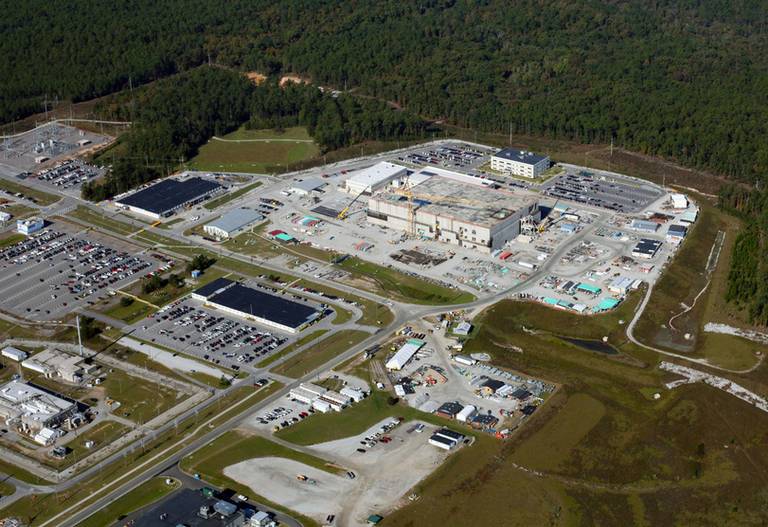
The federal government has proposed a multibillion dollar plutonium pit factory that could create as many as 1,700 jobs as part of an effort to make fresh plutonium, a major ingredient in atomic bombs.
Pro-nuclear groups say the pit plant is a good replacement for the mixed oxide fuel facility, commonly known as MOX. Not only will it provide jobs, but it will help keep the United States safe, they say.
Clements and Jay Coghlan, who directs Nuclear Watch New Mexico, don’t see it that way.
“It will be a great waste of taxpayer’s money,’’ Coghlan said. “There also is a long history of chronic safety problems and environmental or waste problems associated with pit production.’’
The proposed factory is raising concerns about its risk to the environment and the public, in addition to how it would be viewed by world leaders. Critics say the government may use the pits in a new type of nuclear weapon, instead of only replenishing the existing stockpile with fresh plutonium.
LETTER: New Mexico governor says no to high-level nuclear waste
mynorthwest.com June 7, 2019
ALBUQUERQUE, N.M. (AP) — New Mexico’s governor said Friday she’s opposed to plans by a New Jersey-based company to build a multibillion-dollar facility in her state to temporarily store spent nuclear fuel from commercial reactors around the U.S.
In a letter to U.S. Energy Secretary Rick Perry, Gov. Michelle Lujan Grisham said the interim storage of high-level radioactive waste poses significant and unacceptable risks to residents, the environment and the region’s economy.
She cited the ongoing oil boom in the Permian Basin, which spans parts of southeastern New Mexico and West Texas, as well as million-dollar agricultural interests that help drive the state’s economy.
Any disruption of agricultural or oil and gas activities as a result of a perceived or actual incident would be catastrophic, she said, adding that such a project could discourage future investment in the area.
“Establishing an interim storage facility in this region would be economic malpractice,” she wrote.
Holtec International has defended its plans, citing unmet obligations by the federal government to find a permanent solution for dealing with the tons of waste building up at nuclear power plants.
 The latest episode of Ploughshares Fund’s new podcast, Press the Button, features Donté Stallworth — former NFL wide receiver and now national security wonk.
The latest episode of Ploughshares Fund’s new podcast, Press the Button, features Donté Stallworth — former NFL wide receiver and now national security wonk.
Hear his remarkable analysis of rising tensions with Iran, Trump’s flaws, and his ideas for a saner nuclear policy: https://www.ploughshares.org/pressthebutton
Listen and subscribe on iTunes · Spotify · SoundCloud · Google Play
Halting Holtec – A Challenge for Nuclear Safety Advocates
The loading of 3.6 million pounds of highly radioactive spent nuclear fuel has been indefinitely halted at the San Onofre independent spent fuel storage installation (ISFSI), operated by Southern California Edison and designed by Holtec International.
BY JAMES HEDDLE | counterpunch.org
Last month, the Nuclear Regulatory Commission (NRC) fined Southern California Edison an unprecedented $116,000 for failing to report the near drop of an 54 ton canister of radioactive waste, and is delaying giving the go-ahead to further loading operations until serious questions raised by the incident have been resolved.
Critics have long been pointing out that locating a dump for tons of waste, lethal for millions of years, in a densely populated area, adjacent to I-5 and the LA-to-San Diego rail corridor, just above a popular surfing beach, in an earthquake and tsunami zone, inches above the water table, and yards from the rising sea doesn’t seem to make a lot of sense from a public safety standpoint.
The near drop incident last August, revealed by a whistleblower, has drawn further attention to the many defects in the Holtec-designed and manufactured facility. It has been discovered that the stainless steel canisters, only five-eights inches thick, are being damaged as they are lowered into the site’s concrete silos. Experts have warned that the scratching or gouging that is occurring makes the thin-walled canisters even more susceptible to corrosion-induced cracking in the salty sea air, risking release of their deadly contents into the environment and even of hydrogen explosions.
Furthermore, critics point out, these thin-walled canisters are welded shut and cannot be inspected, maintained, monitored or repaired.
How Trump Could Restart the Nuclear Arms Race
Some key arms control agreements could be on the chopping block.
BY FRED KAPLAN | slate.com
If President Donald Trump doesn’t act quickly, the nuclear arms race, which has been fairly dormant for decades, might break into a gallop.
Trump is famously hostile toward international treaties, especially those that constrain America’s actions, even if they’re actions that no one is particularly keen to take. The Iran nuclear deal, the Paris climate agreement, the Trans-Pacific Partnership, and the Intermediate-Range Nuclear Forces Treaty are all commitments that Trump has ripped up for no good reason.
The scuttling of that last accord, often abbreviated as the INF Treaty, which was signed in 1987 by U.S. President Ronald Reagan and Soviet Union leader Mikhail Gorbachev (and eliminated all U.S. and Soviet missiles having a range between 500 and 5,000 kilometers), marked the first time Trump abrogated a nuclear arms agreement between the United States and Russia, the two major nuclear powers.
Bob Peurifoy worked at the Sandia Labs for 39 years, serving as director of nuclear weapon development and retiring as a vice president. He was the driving force behind many safety improvements to U.S. nuclear weapons and a strong believer in conservative maintenance of the stockpile. Bob was also a strong critic of aggressive Life Extension Programs that further diverged the stockpile from its tested pedigree and wasted taxpayers’ money. As Bob’s friend and colleague Gordon Moe puts it, “Bob’s family and I hope that Bob’s wisdom and reason as reflected in the Tribute will continue to benefit humanity for many more years through its use as a reference by researchers in the field of nuclear weaponry.”
VIEW FULL TRIBUTE – PDF
Nation’s most ambitious project to clean up nuclear weapons waste has stalled at Hanford
The Energy Department’s most environmentally important and technically ambitious project to clean up Cold War nuclear weapons waste has stalled, putting at jeopardy an already long-delayed effort to protect the Columbia River in central Washington.
BY RALPH VARTABEDIAN | latimes.com
Entry sign at Hanford Site, Washington.Photograph taken by Tobin Fricke – January 2005.
In a terse letter last week, state officials said the environmental project is at risk of violating key federal court orders that established deadlines after past ones were repeatedly missed.
Two multibillion-dollar industrial facilities intended to turn highly radioactive sludge into solid glass at the Hanford nuclear site have been essentially mothballed. Construction was halted in 2012 because of design flaws and Energy Department managers have foundered in finding alternatives, according to the letter that threatens new litigation.
The department has stored 56 million gallons of radioactive sludge left over from the production of plutonium in 177 leaky underground tanks on a desert plateau a few miles from the Columbia River, raising concerns that the material has migrated into groundwater and eventually will reach the largest river in the West.
 Listen to the latest episode of Ploughshares Fund’s new podcast, Press the Button, featuring Eric Schlosser, filmmaker and author of several publications, including Command and Control. This is a particularly powerful episode to share. Eric is clear and compelling about the inherent risks of our deterrence strategy, the fallibility of the US nuclear command and control and the horrors from the use of just one nuclear weapon. He is one of the most compelling advocates on our issues in the country today. It’s worth a listen!
Listen to the latest episode of Ploughshares Fund’s new podcast, Press the Button, featuring Eric Schlosser, filmmaker and author of several publications, including Command and Control. This is a particularly powerful episode to share. Eric is clear and compelling about the inherent risks of our deterrence strategy, the fallibility of the US nuclear command and control and the horrors from the use of just one nuclear weapon. He is one of the most compelling advocates on our issues in the country today. It’s worth a listen!
You can listen here: https://www.ploughshares.org/pressthebutton
Or – Listen and subscribe on iTunes · Spotify · SoundCloud · Google Play
HASC Panel’s Bill Could Slow-Roll NNSA’s Planned S.C. Pit Plant
The Department of Energy would no longer have to make 80 plutonium pits a year by the end of the next decade, if legislation unveiled Monday in the Democrat-controlled House becomes law.
EXCHANGE MONITOR | June 4, 2019
The legislation, due for a vote Tuesday by House Armed Services strategic forces subcommittee “would repeal the requirement for the Secretary of Energy to demonstrate the capability to produce war reserve plutonium pits at a rate sufficient to produce 80 pits per year by 2027,” according to the subcommittee’s portion of the 2020 National Defense Authorization Act (NDAA).
The NDAA is the annual policy bill that sets funding limits for defense programs including those managed by the DOE’s National Nuclear Security Administration (NNSA). The full House Armed Services Committee is set to vote on the entire House NDAA on June 12.
New, More Usable Nukes for Trump? No.
Congress should use the new defense authorization bill to bar the deployment of new, dangerous, and redundant nuclear weapons.
REP. TED W. LIEU D-CALIFORNIA & SEN. EDWARD J. MARKEY D-MASSACHUSETTS | defenseone.com
U.S. NAVY / MASS COMMUNICATION SPECIALIST 1ST CLASS JAMES KIMBER |The Ohio-class ballistic missile submarine USS Tennessee (SSBN 734) returns to Naval Submarine Base Kings Bay.
The United States has the world’s most powerful military ever. It spends more on defense than the next seven countries combined and has developed many of the most destructive conventional weapons ever created to ensure that America can address any threat. Congress consistently authorizes investments in innovative technology and weaponry to protect our country and our allies. We also possess a strong nuclear deterrent.
These are insanely destructive weapons with an unparalleled ability to kill and destroy, both instantly and for years afterward from the nuclear fallout. Nuclear weapons should never, ever be used first and new nuclear weapons must not be designed to be more usable.
Yet last year, the Trump Administration came to Congress with just such a request to develop a new “low-yield” nuclear warhead for our submarine-launched ballistic missile, the Trident D5. Congress foolishly authorized the development of this warhead on a party-line vote, but there is still time to correct course.
Letter on Need for a Programmatic EIS for Expanded Plutonium Pit Production
Could Trump Trash The Nuclear Test Ban Treaty?
Think of what the world would be like if Russia, the United States, China, India and Pakistan were testing nuclear weapons.
BY MICHAEL KREPON | forbes.com
They are not because of the Comprehensive Test Ban Treaty (CTBT) which is responsible for shutting down nuclear testing by major and regional powers for more than two decades. Walking away from the CTBT would be extraordinarily dumb and dangerous, but the Trump administration has taken a step in this direction.
The CTBT was negotiated in 1996, but it isn’t solidly in place. While Russia has signed and ratified it, Senate Republicans rejected it in 1999. China, like the United States, has signed but not ratified. There are other holdouts, including India and Pakistan. And yet none of these states has tested nuclear weapons since 1998. When a treaty is negotiated, it’s common diplomatic practice not to undercut its objectives while awaiting its entry into force. Hence the two-decades-long moratorium on testing by every nuclear-armed state except North Korea.
Billion-dollar LANL building has plumbing problem
BY MARK OSWALD / JOURNAL STAFF WRITER
Saturday, June 1st, 2019 at 12:05am Copyright © 2019 Albuquerque Journal
SANTA FE – A building at Los Alamos National Laboratory with a price pegged at more than $1 billion apparently has some bad plumbing.
A federal safety oversight board recently reported that the operations staff at the Radiological Laboratory Utility Office Building found a leak in the building’s radioactive liquid waste system.
…
Jay Coghlan of Nuclear Watch New Mexico, a frequent LANL critic who called attention to the recent safety board report, said the plumbing problem is symptomatic of the lab’s history of safety issues, which has included using the wrong kind of cat litter as a desiccant when packing a radioactive waste drum. A reaction in the drum caused it to breach in 2014 and contaminate the nation’s nuclear waste storage facility near Carlsbad.
30th Anniversary of Tiananmen Square
Thirty years ago, Beijing’s Tiananmen Square became the focus for large-scale protests, which were crushed by China’s Communist rulers.
In the 1980s, China was going through huge changes. The ruling Communist Party began to allow some private companies and foreign investment. Leader Deng Xiaoping hoped to boost the economy and raise living standards. However, the move brought with it corruption, while at the same time raising hopes for greater political openness. The Communist Party was divided between those urging more rapid change and hardliners wanting to maintain strict state control. In the mid-1980s, student-led protests started, and in spring 1989, the protests grew, with demands for greater political freedom. On June 4, 1989, Chinese troops were sent to crush pro-democracy student protests in the famous square in central Beijing, leaving at least hundreds—and possibly thousands—of people dead.
The casualties included soldiers, but were overwhelmingly unarmed demonstrators who had been protesting in the square for six weeks, turning the site into the hub for protests in 400 other cities nationwide. Millions of people took part in the demonstrations, with more than 1 million people descending on Tiananmen Square.
As part of an ongoing brutal crackdown of internal dissent, Chinese authorities have carried out a harsh policy of history suppression, forbidding on-line or other discussions of the events at Tiananmen Square. In light of that it is worth recalling what U.S. government officials learned at the time and how they assessed Beijing’s response to internal dissent.
To mark an event that decisively shaped contemporary China, the National Security Archive is republishing three documentary E-books that appeared on previous anniversaries, in 1999, 2001, and 2015. The declassified documents demonstrate that U.S. embassy officials realized very quickly that the Chinese military had carried out a massacre ordered by top officials who feared the public expression of dissent could threaten Communist Party rule. VIEW HERE
Billion-dollar LANL building has plumbing problem
JUNE 1, 2019 | BY MARK OSWALD | abqjournal.com
Copyright © 2019 Albuquerque Journal
SANTA FE – A building at Los Alamos National Laboratory with a price pegged at more than $1 billion apparently has some bad plumbing.
A federal safety oversight board recently reported that the operations staff at the Radiological Laboratory Utility Office Building found a leak in the building’s radioactive liquid waste system.
Lab watchdogs have labeled RLUOB, which got the green light for construction in 2011, as the most expensive building in New Mexico. The lab’s website says it’s part of a capital project to replace aging Cold War-era facilities.
Jay Coghlan of Nuclear Watch New Mexico, a frequent LANL critic who called attention to the recent safety board report, said the plumbing problem is symptomatic of the lab’s history of safety issues, which has included using the wrong kind of cat litter as a desiccant when packing a radioactive waste drum. A reaction in the drum caused it to breach in 2014 and contaminate the nation’s nuclear waste storage facility near Carlsbad.
“Remember, this is the gang that couldn’t get it straight between organic and inorganic cat litter, sending a radioactive waste drum that ruptured and closed the Waste Isolation Pilot Plant for three years, costing the American taxpayer three billion dollars to reopen,” Coghlan said in a statement. “Now we learn that they don’t know elementary plumbing for liquid radioactive wastes lines, and we’re supposed to trust them while they unjustifiably expand plutonium pit production?”
LANL is in the process of ramping up for a congressional mandate to the National Nuclear Security Administration, which oversees the nation’s weapons complex, for production of “pits,” the plutonium cores of nuclear weapons as part of a huge plan to modernize the nation’s nuclear arsenal.
Atomic Veterans Were Silenced for 50 Years. Now, They’re Talking.
Nearly everyone who’s seen it and lived to tell the tale describes it the same way: a horrifying, otherworldly thing of ghastly beauty that has haunted their life ever since.
VIDEO BY MORGAN KNIBBE | theatlantic.com
“The colors were beautiful,” remembers a man in Morgan Knibbe’s short documentary The Atomic Soldiers. “I hate to say that.”
“It was completely daylight at midnight—brighter than the brightest day you ever saw,” says another.
Many tales of the atomic bomb, however, weren’t told at all. In addition to the hundreds of thousands of Japanese civilians who died in Hiroshima and Nagasaki, an estimated 400,000 American soldiers and sailors also observed nuclear explosions—many just a mile or two from ground zero. From 1946 to 1992, the U.S. government conducted more than 1,000 nuclear tests, during which unwitting troops were exposed to vast amounts of ionizing radiation. For protection, they wore utility jackets, helmets, and gas masks. They were told to cover their face with their arms.
After the tests, the soldiers, many of whom were traumatized, were sworn to an oath of secrecy. Breaking it even to talk among themselves was considered treason, punishable by a $10,000 fine and 10 or more years in prison.
New START Must Be Extended, Without or Without China
The baffling non-answers from the senior administration officials strongly suggest that the president’s impulse for a grand U.S.-Chinese-Russian arms control bargain is not backed up with a realistic plan.
BY DARYL KIMBALL | nationalinterest.org
On May 14, Secretary of State Mike Pompeo traveled to Sochi, Russia to discuss what the State Department called a “new era” in “arms control to address new and emerging threats” with Russian foreign minister Sergey Lavrov and President Vladimir Putin.
The trip follows reports that Donald Trump has directed his administration to seek a new arms control agreement with Russia and China that should include: “all the weapons, all the warheads, and all the missiles.”
U.S. officials, including National Security Advisor John Bolton, have criticized the 2010 New Strategic Arms Reduction Treaty (New START) because it only limits U.S. and Russian deployed strategic nuclear weapons and does not cover Russia’s stockpile of sub-strategic warheads in central storage inside Russia.
New START, which caps each side’s enormous and devastating long-range nuclear weapons to no more than 1,550 deployed warheads and 700 deployed strategic missiles and bombers, will expire in February 2021 if Trump and Putin don’t agree to an extension.
Continue reading
Trump Prepared to Bypass Congress on Saudi Arms Sale: Senators
Democrats warn Trump may use ’emergency’ loophole to sell missiles to Saudi Arabia without congressional approval.
WILLIAM ROBERTS | aljazeera.com
Washington, DC – Democrats in the United States Senate have warned that the Trump administration is preparing to approve a major new arms sale to Saudi Arabia, using an “emergency” loophole to bypass Congress.
“I am expecting that the administration is going to notice a major arms sale through emergency powers,” Senator Chris Murphy, a Democrat, told Al Jazeera on Thursday, after he said an administration official gave the Senate Foreign Relations Committee “informal notice” of the forthcoming announcement.
US arms control law allows Congress to reject weapons sales to foreign countries but an exemption in the law allows the president to waive the need for congressional approval by declaring a national security emergency.
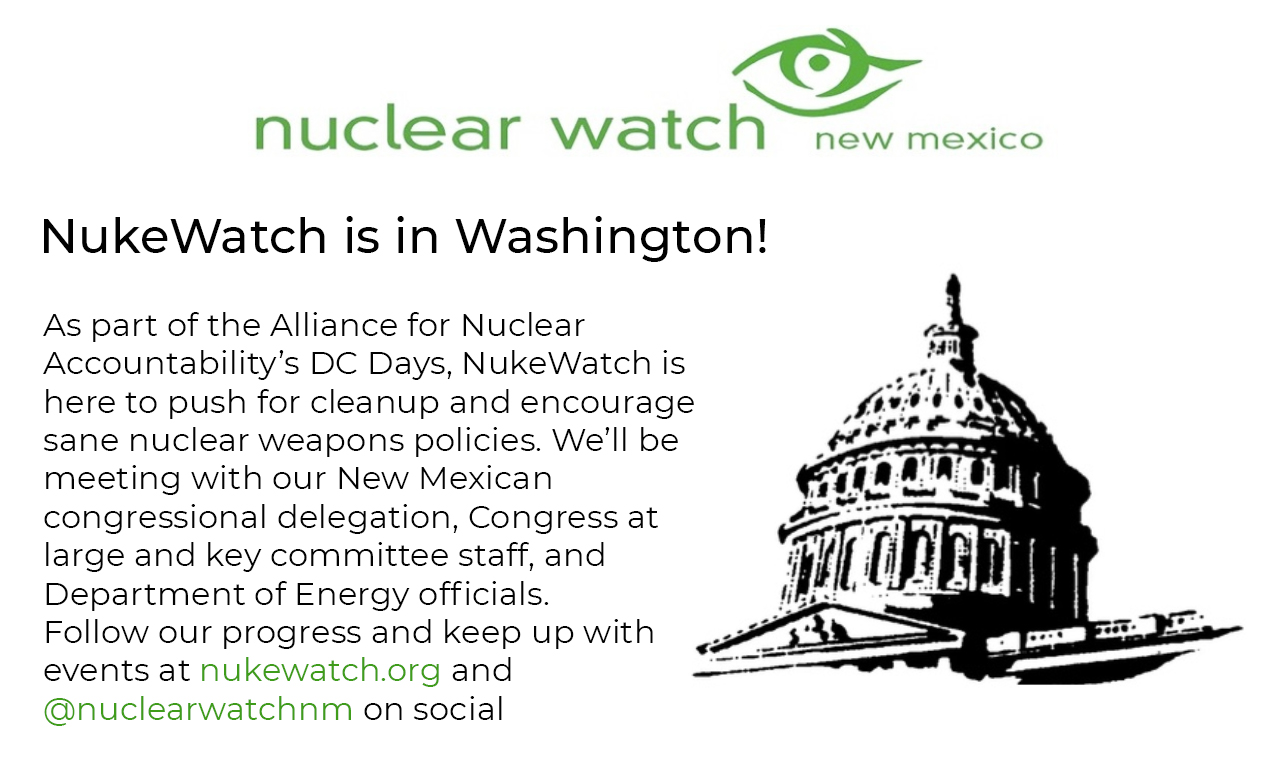 Last week, Nuclear Watch New Mexico was in Washington participating in the Alliance for Nuclear Accountability’s 31st annual DC Days. As a recent addition to the NukeWatch NM staff, this was my first time attending DC Days. The week consisted of a Sunday training day followed by three days straight of lobbying meetings with congress and other government departments that have a huge say in new nuclear weapons or energy developments. When the meeting days concluded, I also attended ANA’s Spring Meeting, which is a two-day debriefing and planning session to discuss thoughts on the week and new plans for the year ahead. This week was not only informative but enlightening, in terms of how I learned the ins-and outs of congress and the true functioning (or lack thereof, occasionally) of government. A large part of why I learned as much as I did and why I did feel so engaged, was due to being surrounded by the most genuine and helpful set of people. I would not have felt as comfortable in this world of politics (which is completely foreign to me) if it was not for the other members of ANA organizations that treated me as an equal contributor, despite my lack of knowledge in certain areas. This is a brief introduction to my time in DC, but there are more technical issues to discuss! A following post will contain the specific details of the issues ANA, and NukeWatch specifically, tackled during the week, including: Lobbying for No New Bomb Plants, Reducing proposed plutonium pit production, fighting Yucca mountain & consolidated interim storage – proposing alternatives to these, supporting a No First Use Policy, and much, much more.
Last week, Nuclear Watch New Mexico was in Washington participating in the Alliance for Nuclear Accountability’s 31st annual DC Days. As a recent addition to the NukeWatch NM staff, this was my first time attending DC Days. The week consisted of a Sunday training day followed by three days straight of lobbying meetings with congress and other government departments that have a huge say in new nuclear weapons or energy developments. When the meeting days concluded, I also attended ANA’s Spring Meeting, which is a two-day debriefing and planning session to discuss thoughts on the week and new plans for the year ahead. This week was not only informative but enlightening, in terms of how I learned the ins-and outs of congress and the true functioning (or lack thereof, occasionally) of government. A large part of why I learned as much as I did and why I did feel so engaged, was due to being surrounded by the most genuine and helpful set of people. I would not have felt as comfortable in this world of politics (which is completely foreign to me) if it was not for the other members of ANA organizations that treated me as an equal contributor, despite my lack of knowledge in certain areas. This is a brief introduction to my time in DC, but there are more technical issues to discuss! A following post will contain the specific details of the issues ANA, and NukeWatch specifically, tackled during the week, including: Lobbying for No New Bomb Plants, Reducing proposed plutonium pit production, fighting Yucca mountain & consolidated interim storage – proposing alternatives to these, supporting a No First Use Policy, and much, much more.
Parties Prepare to Start Mediation Over WIPP Waste Volume

Face-to-face mediation is expected in June between public interest groups and the New Mexico Environment Department over changes to the way waste volume is calculated underground at the Energy Department’s Waste Isolation Pilot Plant (WIPP).
exchangemonitor.com | May 23, 2019
The New Mexico Court of Appeals often encourages mediation in cases involving state agencies in hopes parties can bridge their differences outside the courtroom, officials say.
A lawsuit filed in January by Nuclear Watch New Mexico and the Southwest Research and Information Center (SRIC), which challenged a change to the state hazardous waste permit for WIPP, has been stayed pending the talks.
New Mexico Court of Appeals Judge Linda Vanzi issued the stay May 2 and called for the parties to file a status report on the mediation by July 31.
The mediation itself should occur in late June, SRIC Administrator Don Hancock said by email.
Then-state Environment Department Secretary Butch Tongate in December authorized a permit modification allowing DOE to stop counting empty spaces between container drums as transuranic waste. The order adopted the findings of state hearing officer, who recommended waste volume counted against the disposal cap set by the 1992 WIPP Land Withdrawal Act should cover only the actual waste inside containers.
Study questions whether LANL, DOE can meet ‘pits’ production goal
Jay Coghlan of Nuclear Watch New Mexico said the report “makes clear that DOE is blowing smoke when it says that it will produce 80 plutonium pits per year by 2030 for new unneeded nuclear weapons. … They need to slow down, do it right and for sure do it safely. Above all the feds must concretely demonstrate a real need for expanded pit production before they fleece the American taxpayer of tens of billions of dollars.”
ARTICLE BY MARK OSWALD | abqjournal.com
SANTA FE – A recent study casts serious doubts on the potential success of any of the options considered by the U.S. Department of Energy for meeting mandates on the manufacture of plutonium cores for nuclear weapons – most of them involving Los Alamos National Laboratory.
The congressionally funded study also says that it would be “very high risk” to try to meet the nation’s ambitious goals for making bomb “pits” by installing more equipment and adding an extra work shift for a production “surge” at LANL’s existing plutonium facility, an idea that has been discussed.
Some of the risks cited in the report include whether there is the ability to stage, store and ship waste, and “the transport/transfer complexity of radioactive material.”
The study goes further and questions the overall plan to ramp up U.S. pit production, which is estimated to cost $14 billion to $28 billion, saying that “eventual success of the strategy to reconstitute plutonium pit production is far from certain.”
Continue reading
Federal workers struggle for years to prove they got sick on the job
Part 2 of NCR’s look at the toxic legacy of one nuclear weapons plant
BY CLAIRE SCHAEFFER-DUFFY | ncronline.org
The Kansas City Plant, pictured May 16, 2019, is under demolition by a private developer. The white bags in the foreground are designed to handle up to 3,000 pounds, or the equivalent of four 55-gallon drums, each of household hazardous waste. (NCR photo/Toni-Ann Ortiz)Editor’s note: As the government invests in the modernization of the U.S. nuclear arsenal, while weakening environmental regulations and federal laws protecting worker safety, National Catholic Reporter looks at the toxic legacy of one shuttered weapons plant in Kansas City, Missouri.
In a three-part series about the Kansas City Plant on Bannister Road and its successor eight miles south, NCR reviews hundreds of pages of government reports and environmental summaries, and interviews more than two dozen sources, including five plant workers and their families, three former federal employees who worked nearby, nuclear industry and government officials, health experts, business sources, state environmental regulators and a former city councilman. This is Part 2. Read Part 1 here.
If the Kansas City Plant was not a “dirty” site, then why were its workers getting sick and dying prematurely? The question haunted television reporter Russ Ptacek. In November 2009, he began investigating the Bannister Federal Complex, a 300-acre property that housed the post-war nuclear components plant as well as various federal offices leased by the General Services Administration (GSA). Ptacek began his inquiry after he was shown a list of nearly 100 sick and dying workers compiled by Barbara Rice, a retired data analyst, who worked for 31 years on the GSA side of the complex.
Nuclear Watch New Mexico & other members of the Alliance for Nuclear Accountability with Congresswoman Deb Haaland at #DCdays this evening. Thank you @RepDebHaaland for taking the time to meet with us! pic.twitter.com/vDyJmj07l9
— Nuclear Watch NM (@NuclearWatchNM) May 21, 2019
Congressman Ben Ray Lujan with Rose Gardner, Don Hancock, and Nuclear Watch NM leaders Scott Kovac & Jay Coghlan #DCDays #ANADCDays pic.twitter.com/Sbc7Ju4a2O
— Nuclear Watch NM (@NuclearWatchNM) May 21, 2019
“This report makes clear that DOE is blowing smoke when it says that it will produce 80 plutonium pits per year by 2030 for new unneeded nuclear weapons. After all, this is the gang that can’t shoot straight. They need to slow down, do it right and for sure do it safely. Above all the feds must concretely demonstrate a real need for expanded pit production before they fleece the American taxpayer of tens of billions of dollars.” — Jay Coghlan, Director – Nuclear Watch New Mexico
Frantic parents fear for kids after radioactive contamination found at Ohio middle school
“It’s so scary that my child has been exposed to this because I have no idea how it’s going to affect him,” one mother said.
BY SAFIA SAMEE ALI | nbcnews.com
Ashley Day has always worried about the health risks of living a few miles from a defunct nuclear power plant in Piketon, Ohio. So, when her son Kendon came home Monday and told her school had been canceled for the rest of the year, she had a sinking feeling there was a connection.
A few hours later, her fears were confirmed: The Scioto Valley Local School District declared in a letter that Zahn’s Corner Middle School would be shut down for the remainder of the school year because of possible radioactive contamination from the nearby Portsmouth Gaseous Diffusion Plant, which the federal Department of Energy is in the process of decommissioning.
“I felt anxiety, anger, and paranoia all at once,” she said. “It’s so scary that my child has been exposed to this because I have no idea how it’s going to affect him.”
Editorial: LANL leaders must make safety the lab’s top mission
“Falling short of the bare minimum in the eyes of the DOE is a far cry from where the public expects or needs LANL to be.”
Credit: Christopher Thompson for The New York TimesBY ALBUQUERQUE JOURNAL EDITORIAL BOARD | cnn.com
A new lab manager, a new mission to modernize the nation’s nuclear arsenal with 30 plutonium “pits” for nuclear bombs, and the same old lackadaisical approach to safety.
Welcome to Los Alamos National Laboratory, a company town where the culture is apparently so ingrained, even tough Department of Energy criticisms are unable to penetrate. At a time when saber-rattling is de rigueur, when concerns over North Korea’s arsenal and a nuclear Iran are high, when HBO is airing “Chernobyl,” that does nothing to instill public trust.
LANL got dinged last year after it mistakenly used a commercial air cargo service for a cross-country radioactive plutonium shipment. In 2014, LANL’s use of the wrong kitty litter burst a storage barrel and prompted a nearly three-year shutdown of the nation’s one-and-only nuclear waste repository, WIPP in Carlsbad. And the year before, a general slate of safety issues at the lab prompted a moratorium on plutonium work.
The latest weaknesses “if uncorrected, can allow layers of defense for nuclear safety to degrade to the extent they did leading to the pause in July 2013 of key fissile material operations in the Plutonium Facility at LANL for over four years,” the DOE audit says.
And that is a huge issue considering the lab is ramping up production on the devices that act as nuclear bomb triggers. The 30-pit order is expected to be met in six years, and there’s no other facility in the country that can fill it.
Ohio town worries about safety after radioactive contamination is found at middle school
On Monday, Zahn’s Corner Middle School in Piketon was closed because enriched uranium had been detected inside the building and neptunium-237 had been detected by an air monitor next to it.
BY CHUCK JOHNSON & SUSAN SCUTTI | cnn.com
(CNN) Are we safe? That’s the concern that’s been in the back of neighbors’ minds when they look at the looming Portsmouth Gaseous Diffusion Plant in Pike County, Ohio, Jennifer Chandler said.
“It looks like they make clouds there,” the Piketon village councilwoman thought as a child, seeing steam coming out of the stacks. “When I was growing up, I didn’t have any idea what they did.”
The US Department of Energy plant was built to produce enriched uranium for the nation’s nuclear weapons program during the Cold War and, in later years, supported commercial nuclear reactors. One of three such plants in the United States, it operated from 1954 to 2001, when it commenced decontamination and decommissioning, which continues today.
In the past five years, five students in the nearby Scioto Valley Local School District have been diagnosed with cancer; three of them have died, Chandler said.
2019 Preparatory Meeting for 2020 Nonproliferation Treaty Review Conference Ends in Failure
NPT Looks Ahead to 2020 Review Conference Without Consensus Recommendations
BY ALICIA SANDERS-ZAKRE | armscontrol.org
NPT states-parties failed to adopt a common set of recommendations for the 2020 Review Conference on the final day of the two week-long 2019 PrepCom on Friday, May 10. Nevertheless, most states expressed optimism in concluding statements about prospects for next year’s review conference and underlined the importance of action in the intervening 12 months on key NPT-related commitments.
The recommendations drafted by the chair, Syed Hussin of Malaysia, failed to garner consensus especially after a round of revisions that sought to take into account the suggestions of the majority of NPT states-parties led several nuclear-weapon states and some of their allies to express their displeasure and their support for the earlier draft. Since NPT states did not adopt the revised draft recommendations by consensus, the document will be issued instead as a working paper submitted by the PrepCom chair. The chair also issued an 8-paragraph reflection on the PrepCom.
In his closing remarks, the incoming president-designate of the 2020 Review Conference, Rafael Mariono Grossi of Argentina promised to “begin work on Monday” on an ambitious plan for consultations with states-parties.
He later tweeted: “As #NPT2019 closes work starts to prepare a successful Review of Non-Proliferation Treaty in 2020. I will consult extensively reach out to all. Everybody’s goal is success. No less.
As #NPT2019 closes work starts to prepare a successful Review of Non Proliferation Treaty in 2020. I will consult extensively reach out to all. Everybody’s goal is success. No less. @UN_Disarmament @CancilleriaARG @ArmsControlNow @NTI_WMD pic.twitter.com/pbaWHq2rsN
— Rafael MarianoGrossi (@rafaelmgrossi) May 10, 2019
Balky Capacitors Could Delay Two NNSA Nuke Refurb Programs
BY DAN LEONE | exchangemonitor.com
WASHINGTON — The National Nuclear Security Administration (NNSA) will be late with initial deliveries to the Pentagon of two refurbished nuclear weapons, the head of the semiautonomous nuclear-weapons agency said here Wednesday.
The Air Force was supposed to get its refurbished B61, to be called B61-12, in 2020. The Navy was supposed to get its first W88 Alt 370 in December 2019. Because of defects with electrical capacitors needed for both weapons, those those dates are now “expected” to slip, an NNSA spokesperson said. How far is yet to be determined.
After disclosing the slip in a hearing of the Senate Armed Services strategic forces subcommittee, NNSA Administrator Lisa Gordon-Hagerty told Weapons Complex Morning Briefing that her agency has been evaluating the bad capacitors for “the last couple of months.”
Capacitors store electric charges. The defective items intended for the B61-12 and W88 Alt 370 are commercial units procured by the NNSA’s Kansas City National Security Campus, which acquires and manufactures the non-nuclear parts of nuclear weapons. Gordon-Hagerty said it will take several months to decide what to do about the wonky components.
Continue reading
Support the JASON science-advisory group
The elite panel that guides the US government is undermined by wavering financial support. More-secure backing is in the national interest.
The Jasons have provided the US government with independent advice on classified military developments and nuclear weapons. Credit: Ringo Chiu/AFP/Gettynature.com | If there is one thing that President Donald Trump’s administration sorely needs, it is rational, independent science-based advice on crucial issues. Which is why it was so concerning when the US Department of Defense (DOD) abruptly decided in March to end its long relationship with a science-advisory panel known as JASON.
For nearly 60 years, the scientists on the panel — the Jasons — have provided the US government with unvarnished, independent advice on matters ranging from classified military developments and nuclear weapons to artificial intelligence and global warming. Its members are a roll call of elite and illustrious scientists.
Federal nuclear board nixes request for hearing on New Mexico waste facility
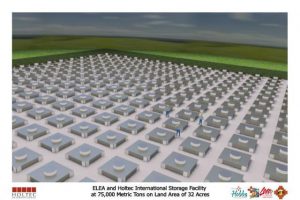
By Rebecca Moss | rmoss@sfnewmexican.com
A federal board that oversees commercial nuclear materials and licenses said Tuesday it has rejected a request by a group of opponents over a proposed nuclear waste storage site in Southern New Mexico.
Holtec International, a New Jersey-based company specializing in nuclear reactor technology, is waiting on the U.S. Nuclear Regulatory Commission to approve its license for an expansive facility that could be used to hold all of the nation’s spent nuclear fuel — radioactive uranium left over from power production.
Engel, McCaul Introduce Legislation to Maintain Limits on Russian Nuclear Forces
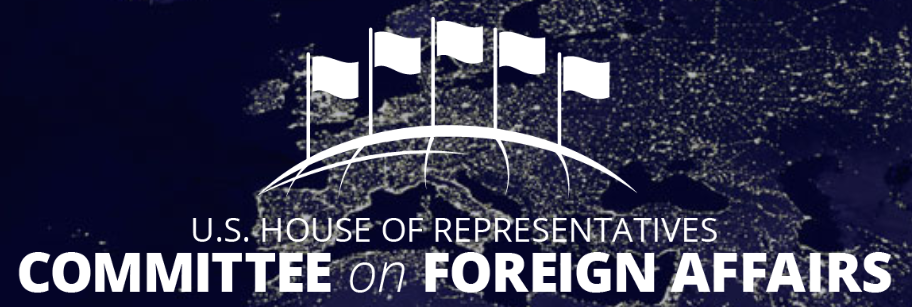 WASHINGTON—Representative Eliot L. Engel, Chairman of the House Committee on Foreign Affairs, and Representative Michael McCaul, the Committee’s ranking member, today introduced legislation calling on the Trump Administration to retain limits on Russia’s nuclear forces. The “Richard G. Lugar and Ellen O. Tauscher Act to Maintain Limits on Russian Nuclear Forces” calls for an extension of New Strategic Arms Reduction Treaty (New START) limits on Russia until 2026, as allowed under the Treaty, unless Russia violates the Treaty or until a new agreement in is in place that provides equal or greater constraints, transparency, and verification measures with regard to Russia’s nuclear forces.
WASHINGTON—Representative Eliot L. Engel, Chairman of the House Committee on Foreign Affairs, and Representative Michael McCaul, the Committee’s ranking member, today introduced legislation calling on the Trump Administration to retain limits on Russia’s nuclear forces. The “Richard G. Lugar and Ellen O. Tauscher Act to Maintain Limits on Russian Nuclear Forces” calls for an extension of New Strategic Arms Reduction Treaty (New START) limits on Russia until 2026, as allowed under the Treaty, unless Russia violates the Treaty or until a new agreement in is in place that provides equal or greater constraints, transparency, and verification measures with regard to Russia’s nuclear forces.
The U.S. Wanted to Hide Nukes in Arctic Ice Tunnels. The Plan Blew Up in Their Faces.
BY VINCE HOUGHTON | time.com May 7, 2019
As far as these things go, Camp Century was a pretty good cover. It was nominally designed as an underground military research station, located about 150 miles east of the American air base at Thule, Greenland. The stated purpose of Camp Century was to improve the American defense capability in the Arctic — to develop better survival and transportation techniques, and to obtain more useful knowledge about the harsh climate and the physical properties of the region. In essence, we covered up for a super-secret operation using a kinda-secret one.
Producing mass destruction: Private companies and the nuclear weapons industry
ICAN and PAX published a new report that shows how the commercial sector is massively involved in producing nuclear weapons. The report, “Producing mass destruction: Private companies and the nuclear weapons industry”, is part of the Don’t Bank on the Bomb project.
EXECUTIVE SUMMARY | dontbankonthebomb.com
FULL REPORT AVAILABLE HERE
 Governments are contracting at least US$ 116 billion (€ 102 billion) to private companies in France, India, Italy, the Netherlands, United Kingdom, and the United States for production, development and stockpiling of nuclear weapons. State owned companies in China connected to nuclear weapon production are starting to raise money through bond issuances, while Israeli, Pakistani, North Korean, and Russian nuclear programmes are still not transparent.
Governments are contracting at least US$ 116 billion (€ 102 billion) to private companies in France, India, Italy, the Netherlands, United Kingdom, and the United States for production, development and stockpiling of nuclear weapons. State owned companies in China connected to nuclear weapon production are starting to raise money through bond issuances, while Israeli, Pakistani, North Korean, and Russian nuclear programmes are still not transparent.
Nuclear News Archives – 2021
Nothing Found
It seems we can’t find what you’re looking for. Perhaps searching can help.

